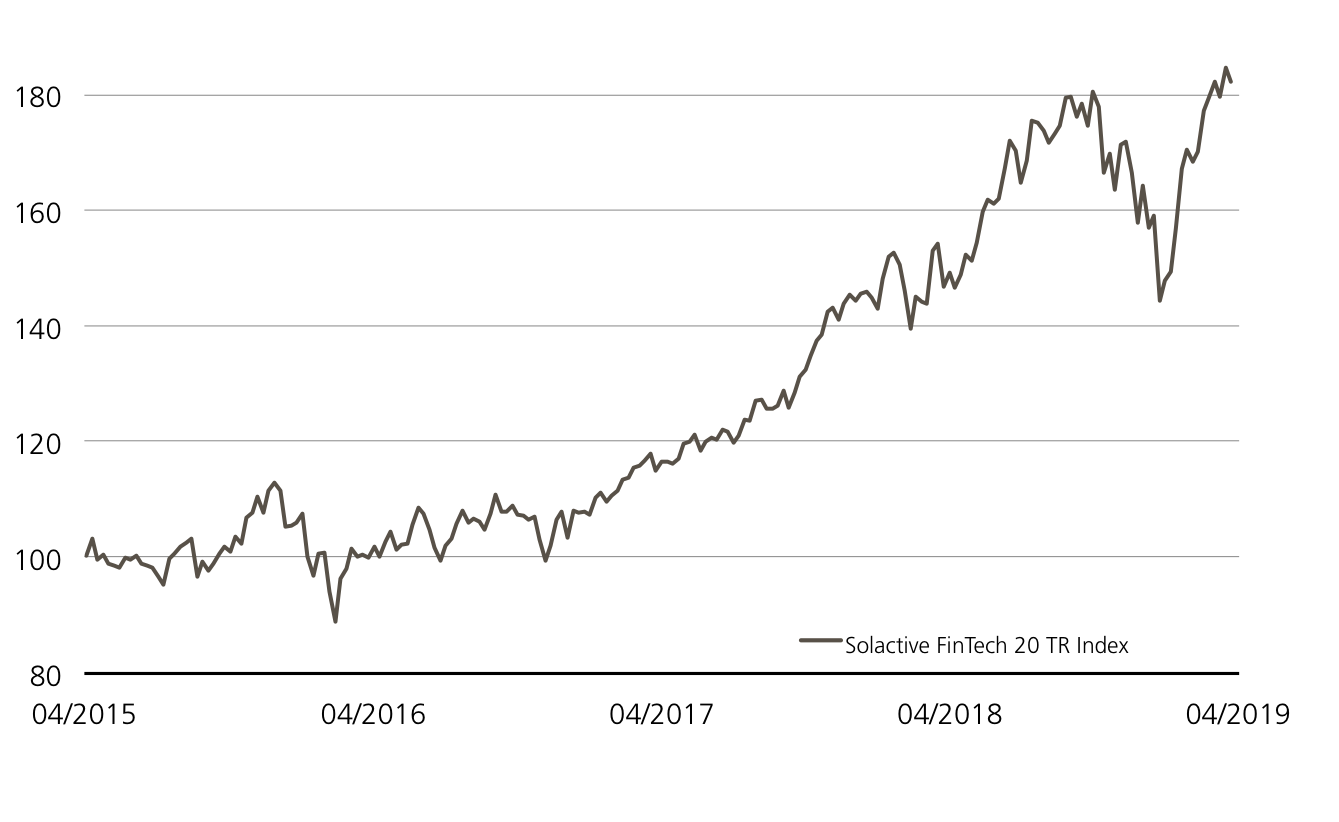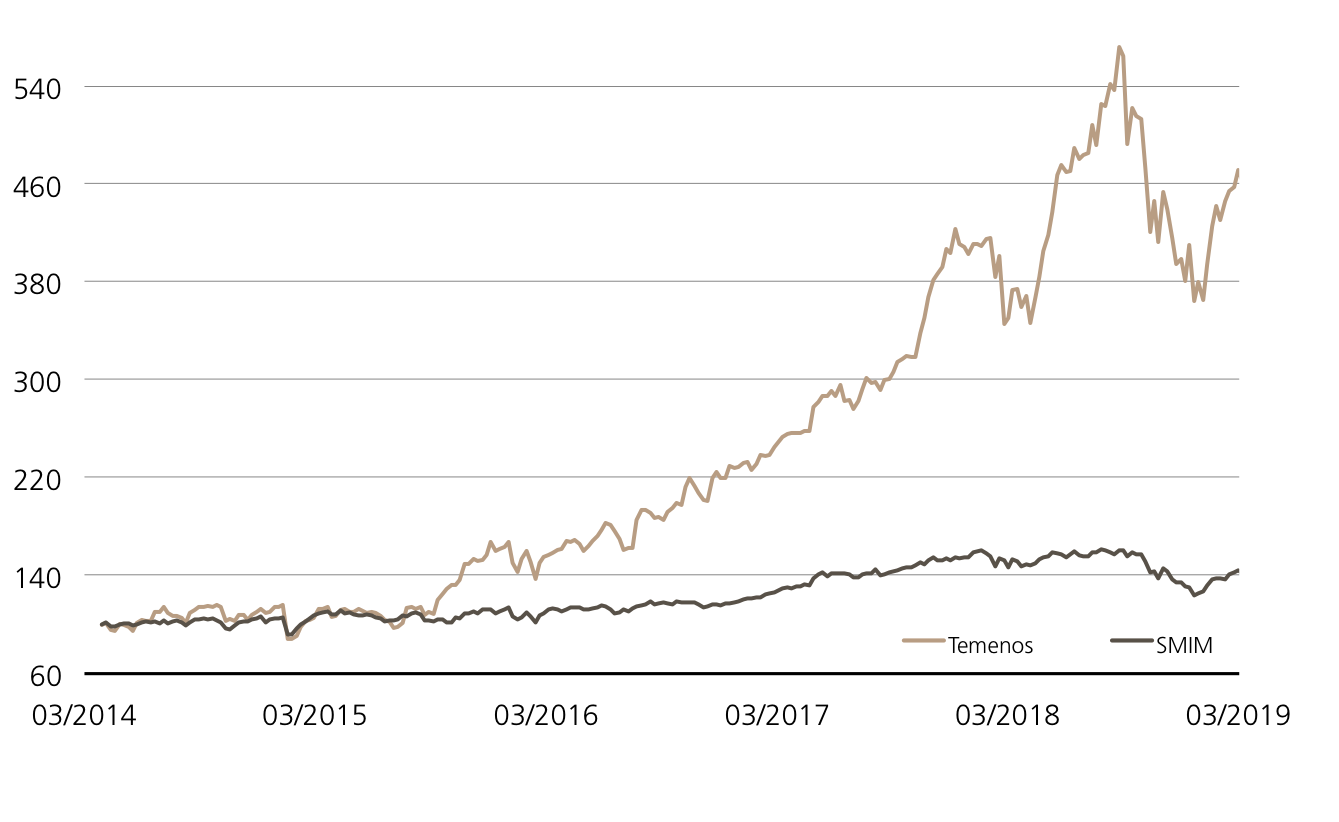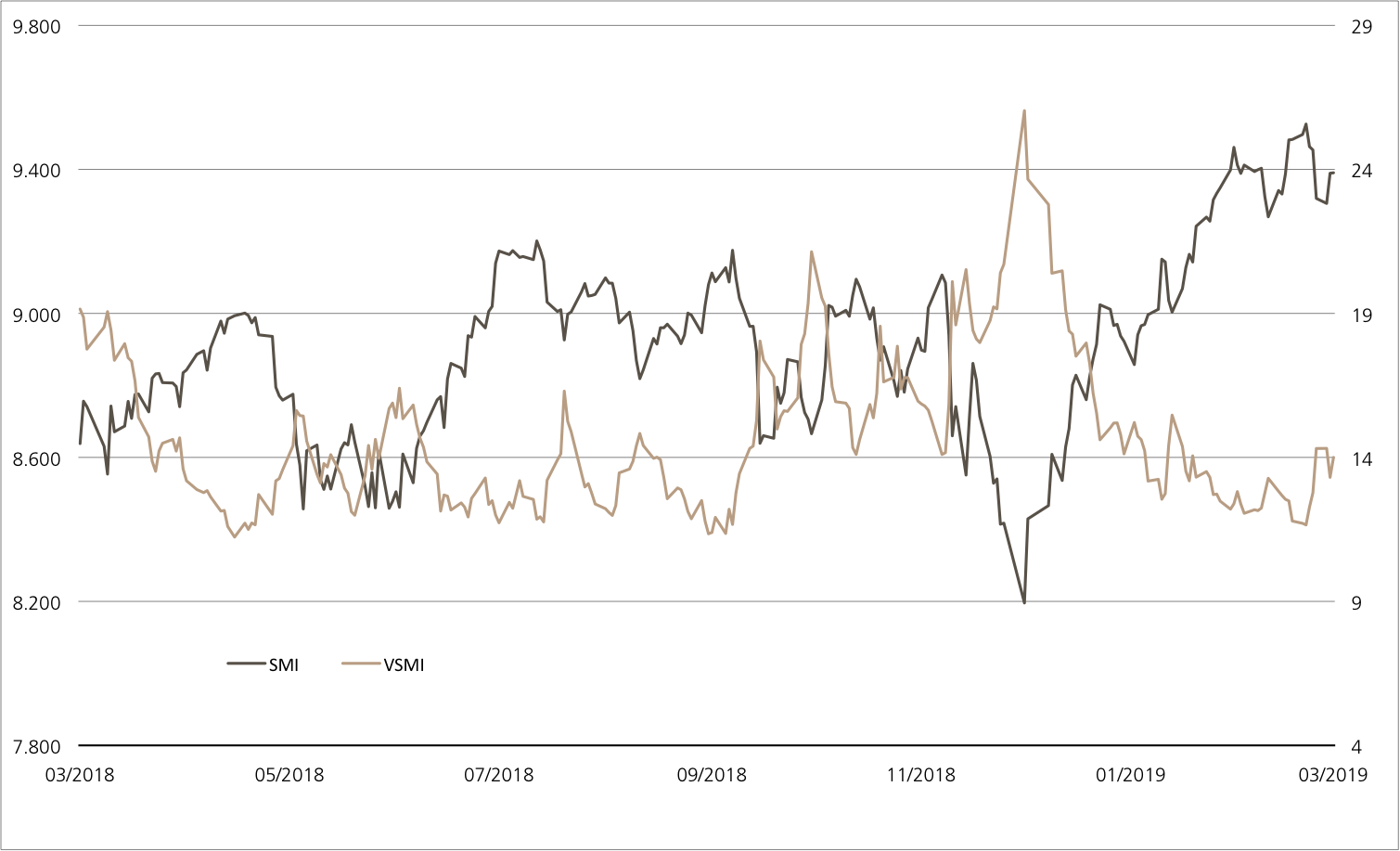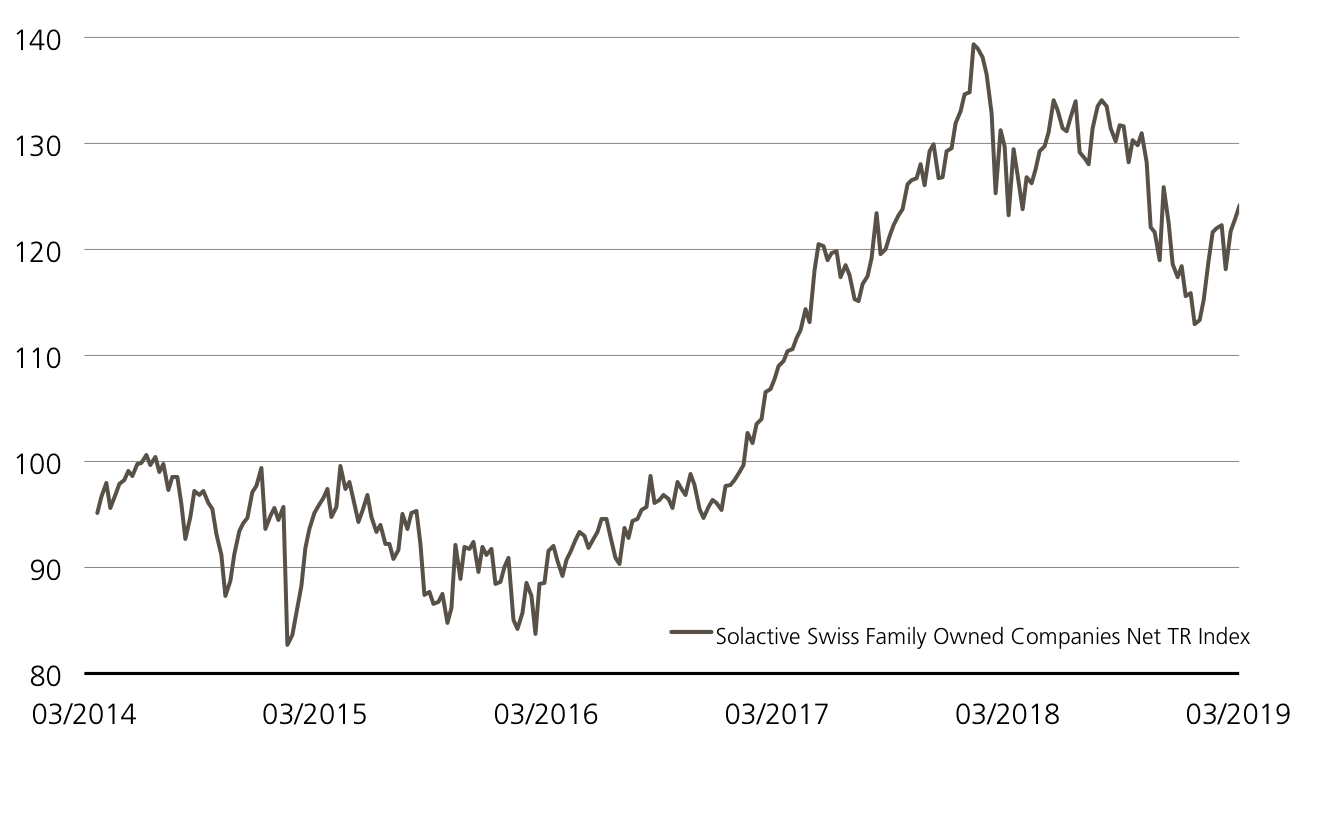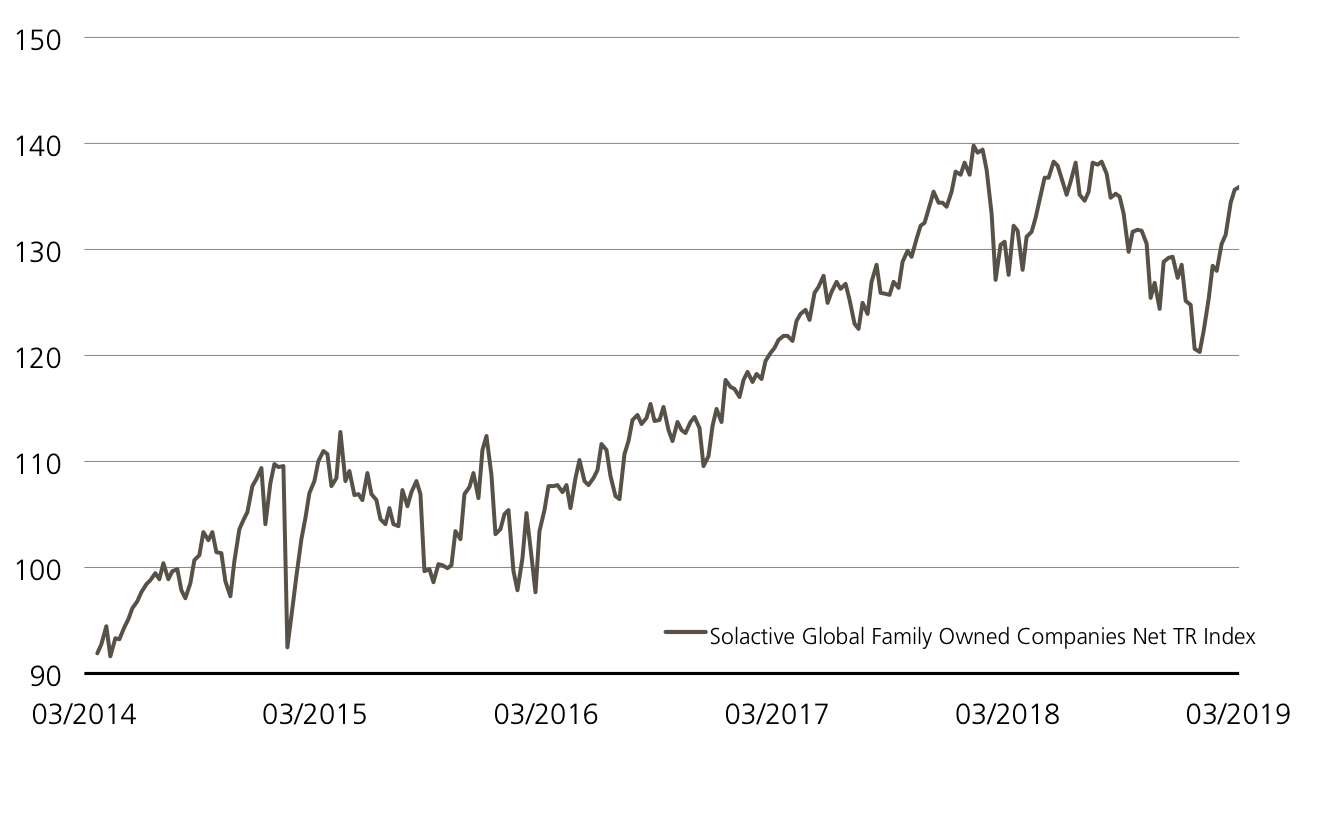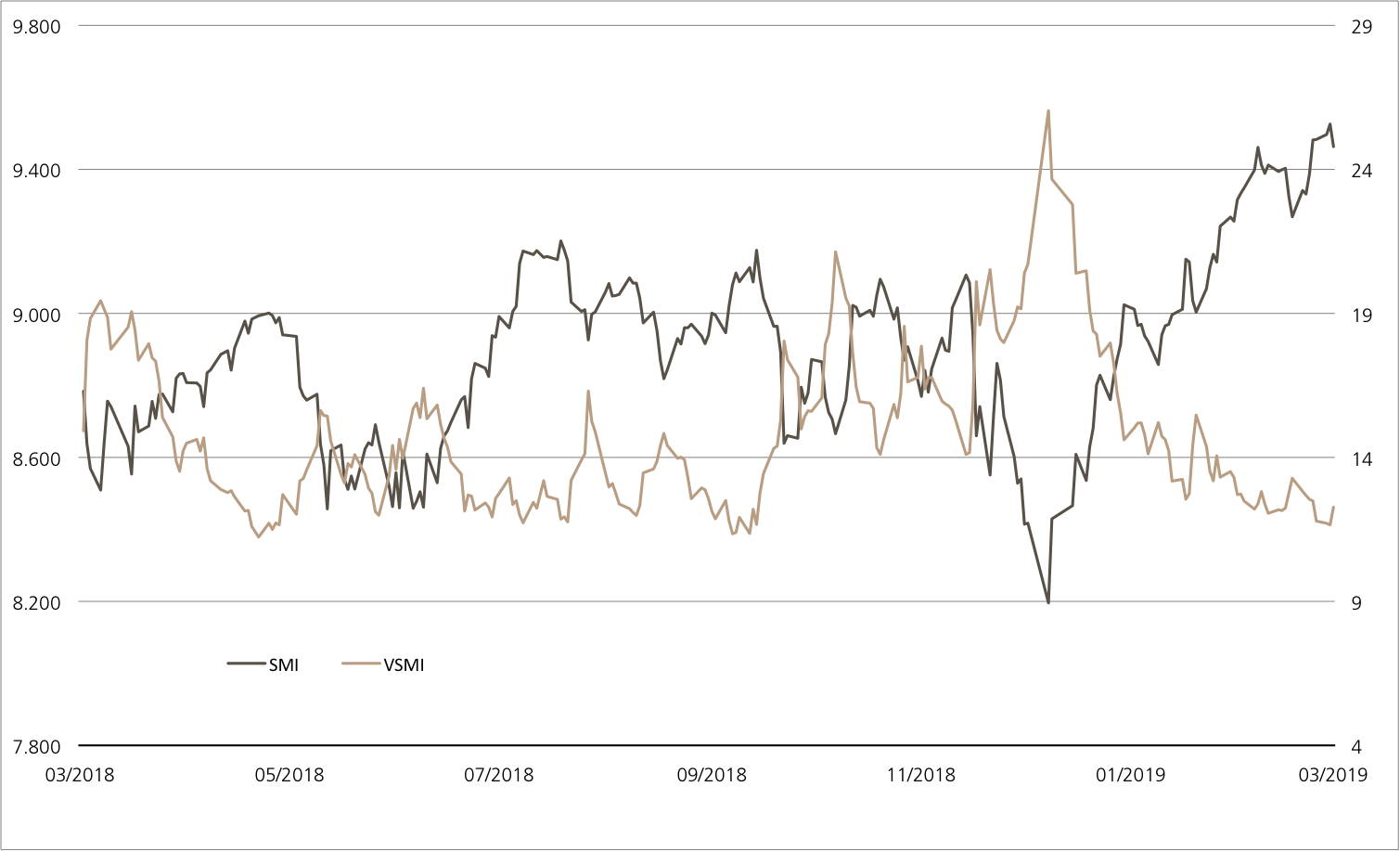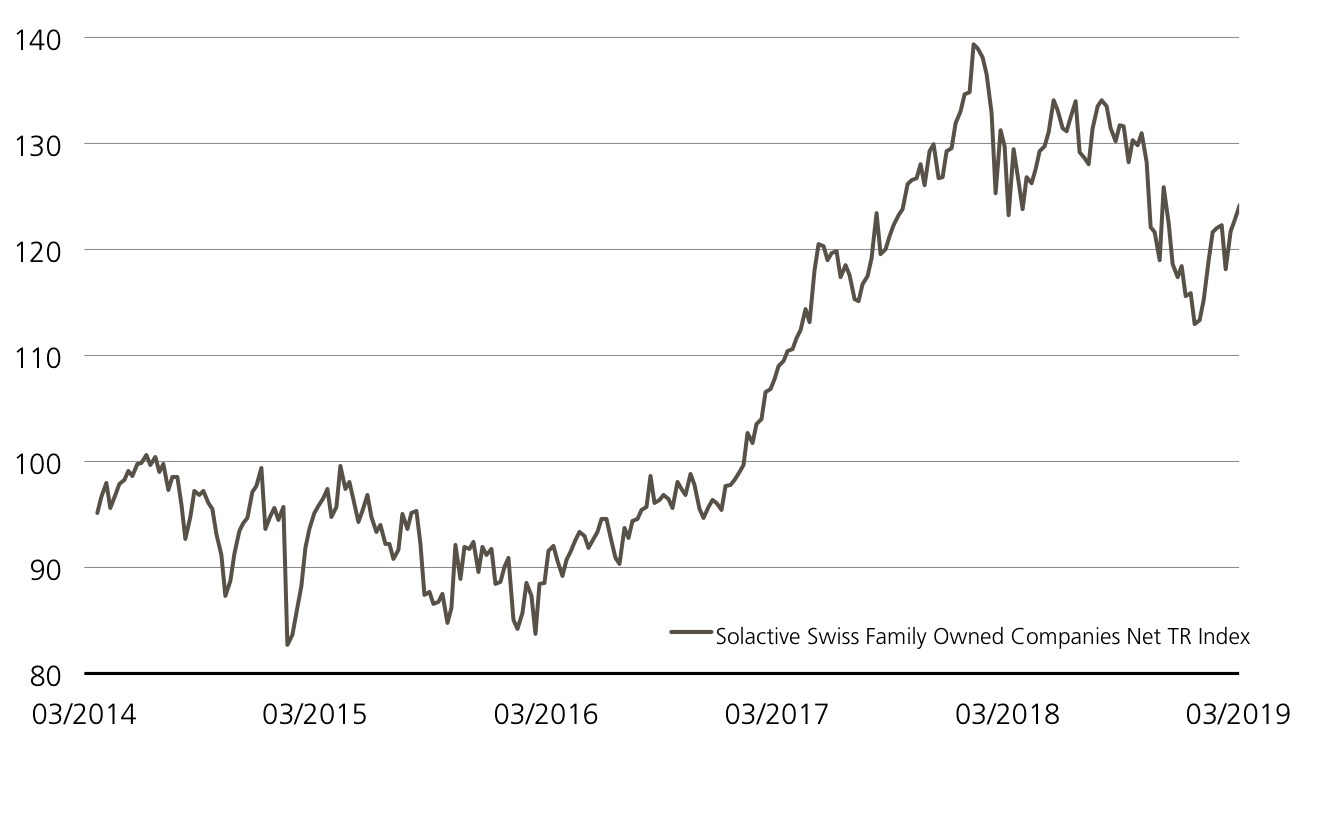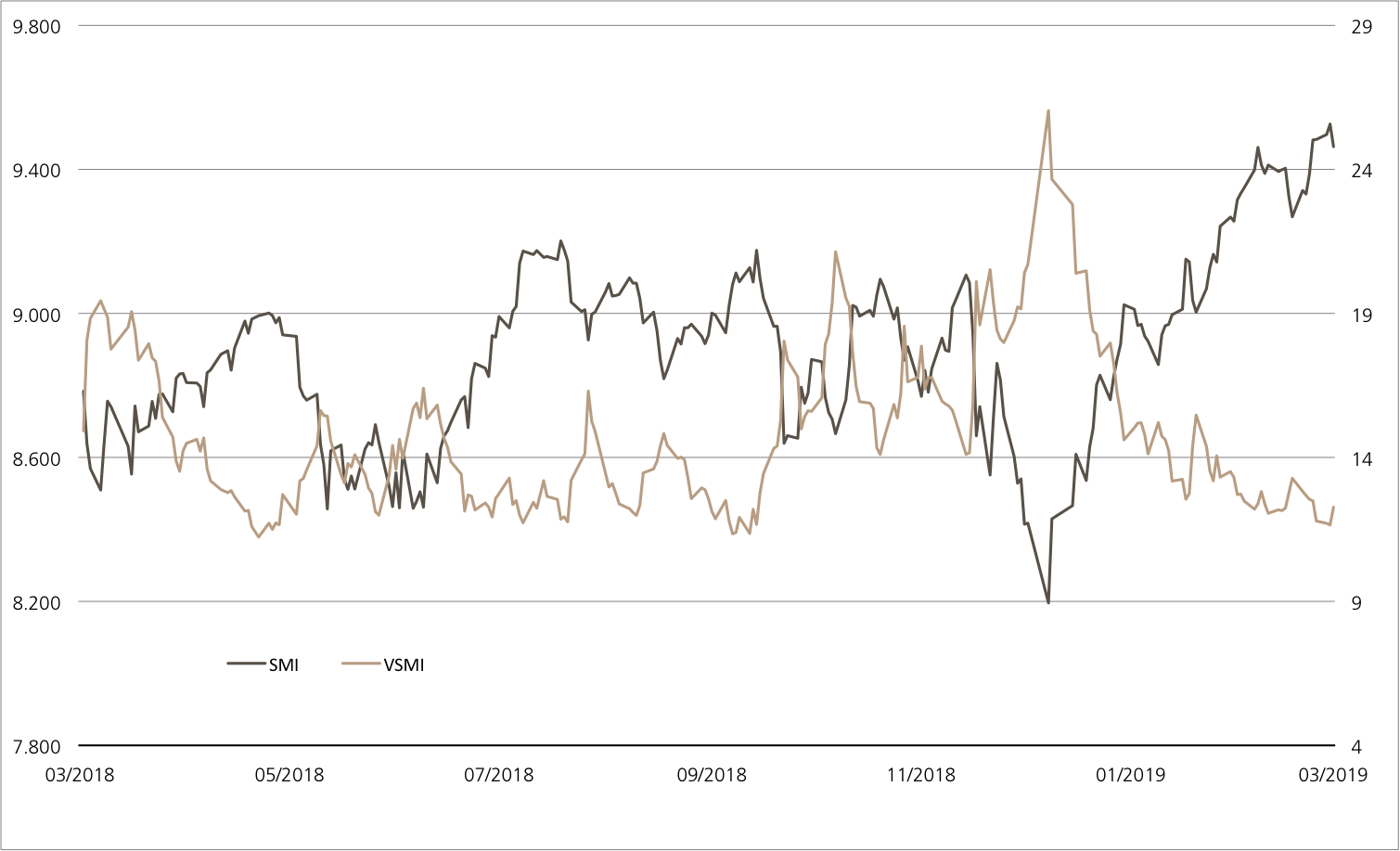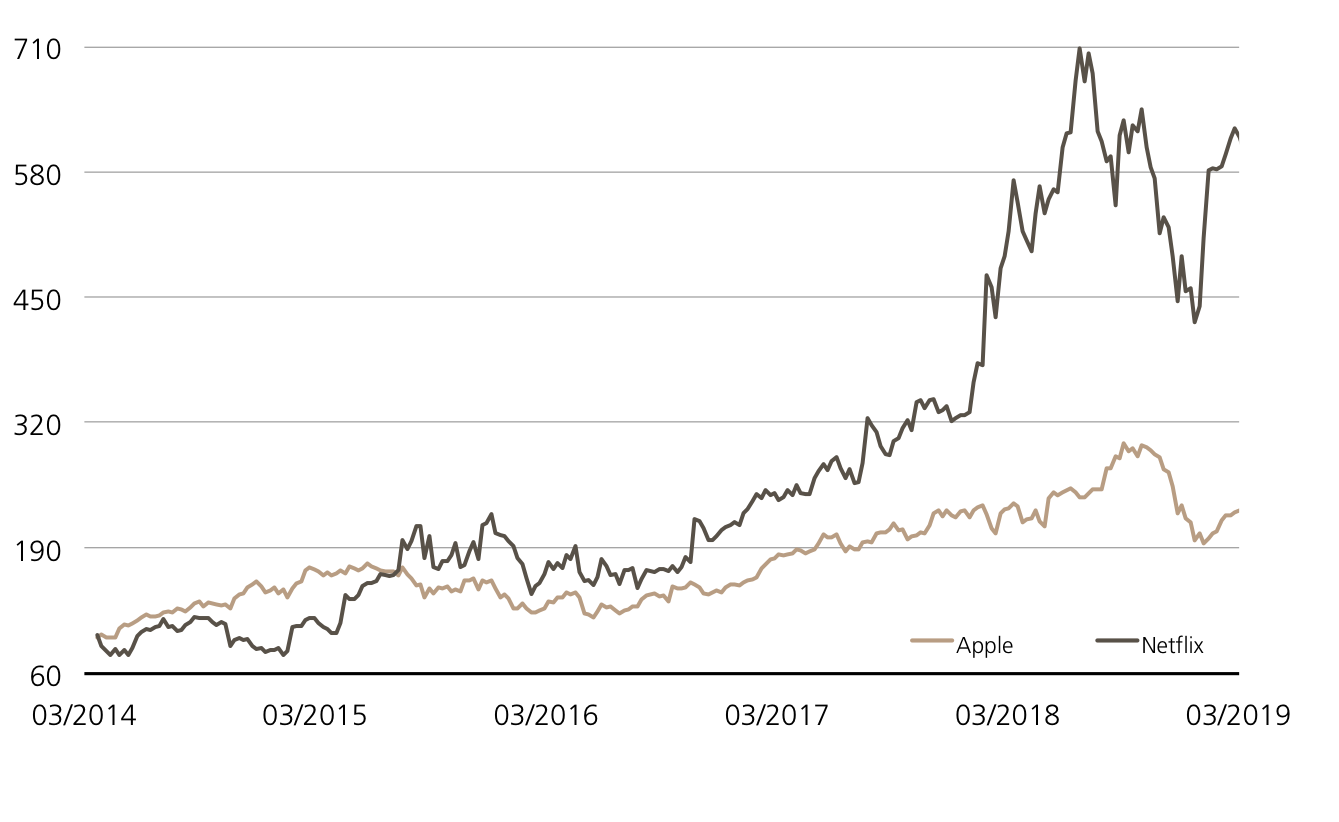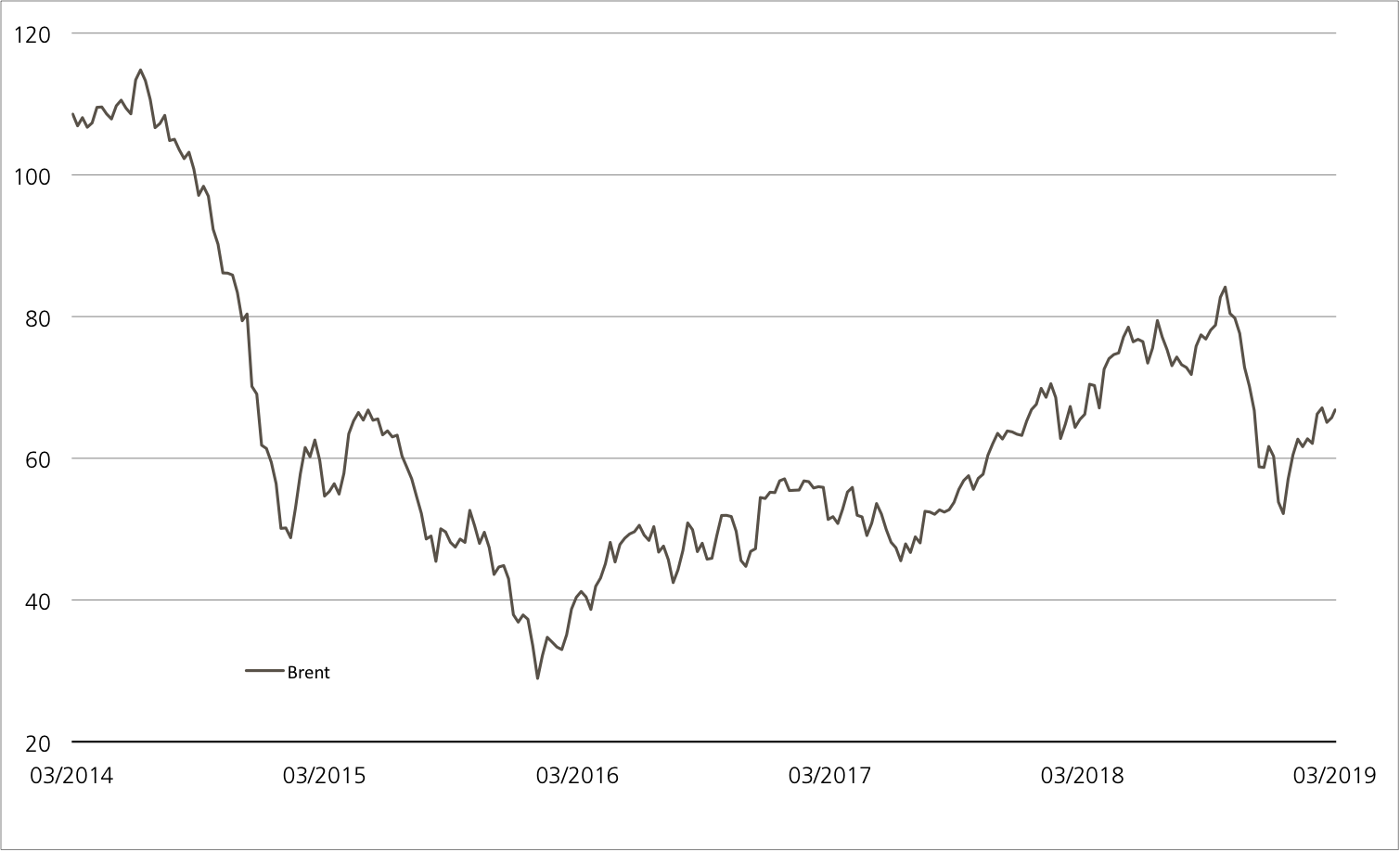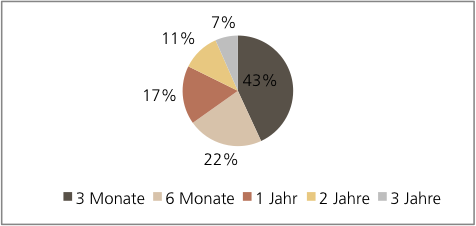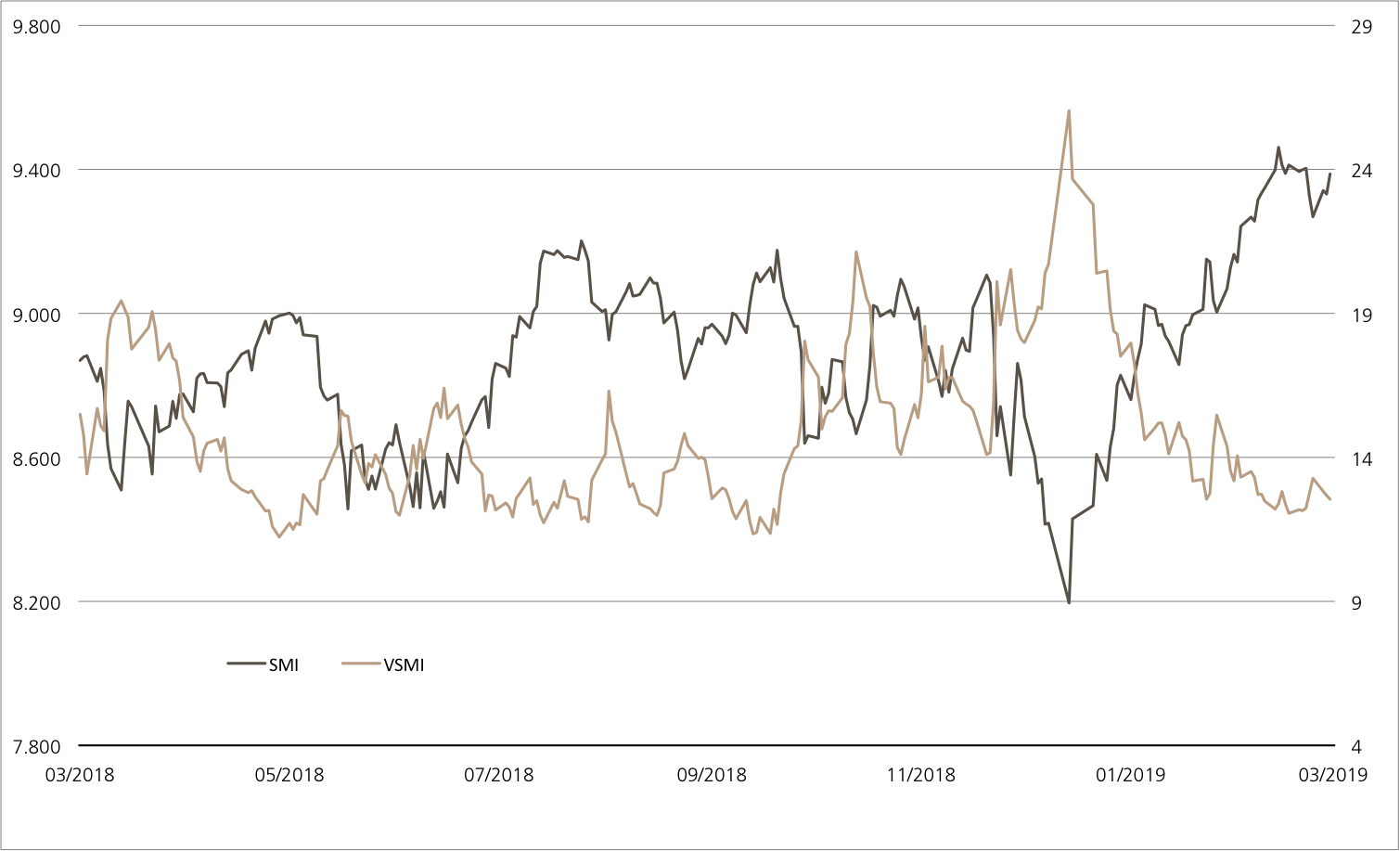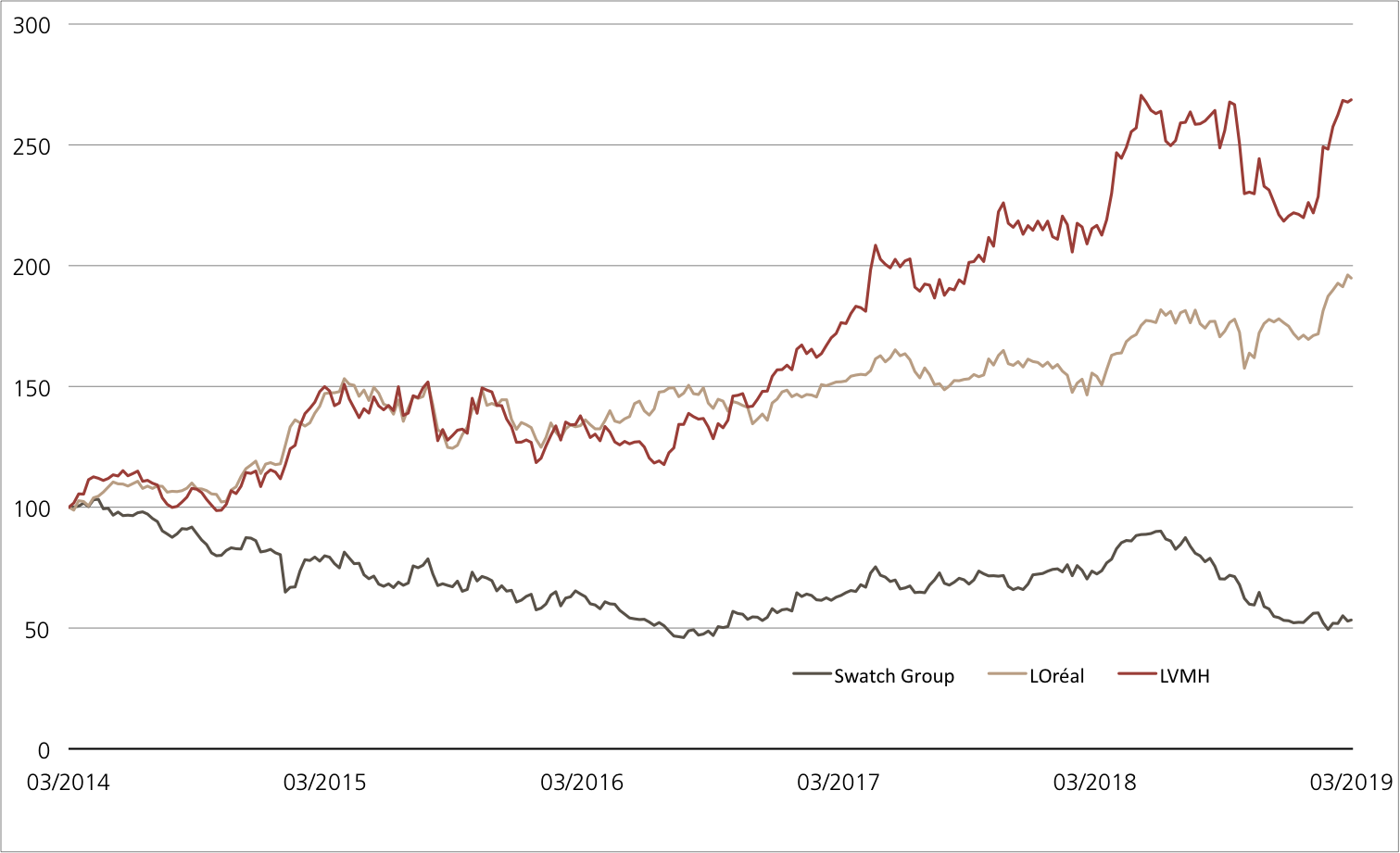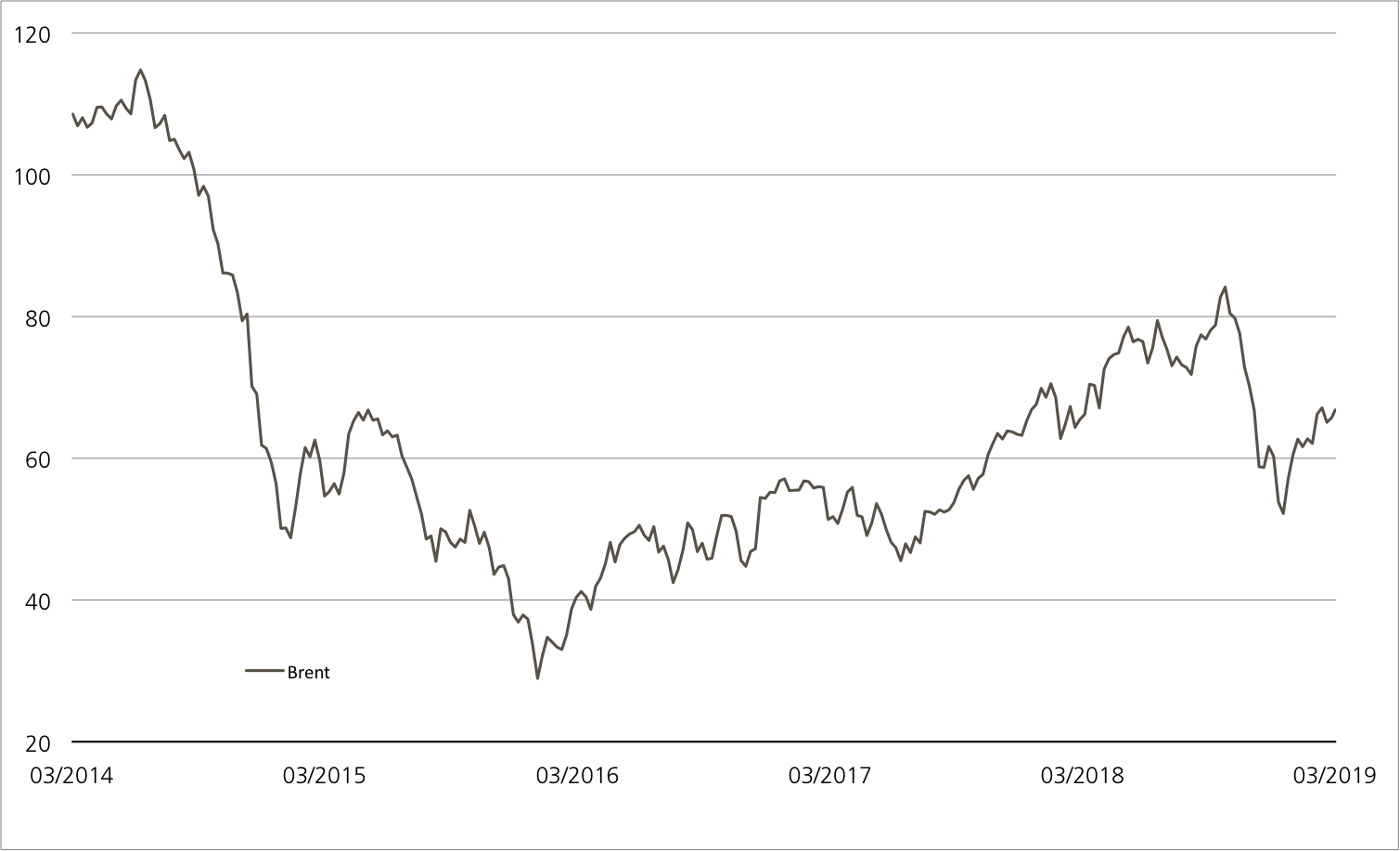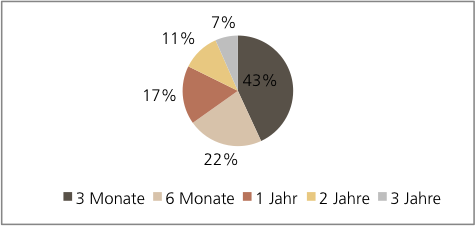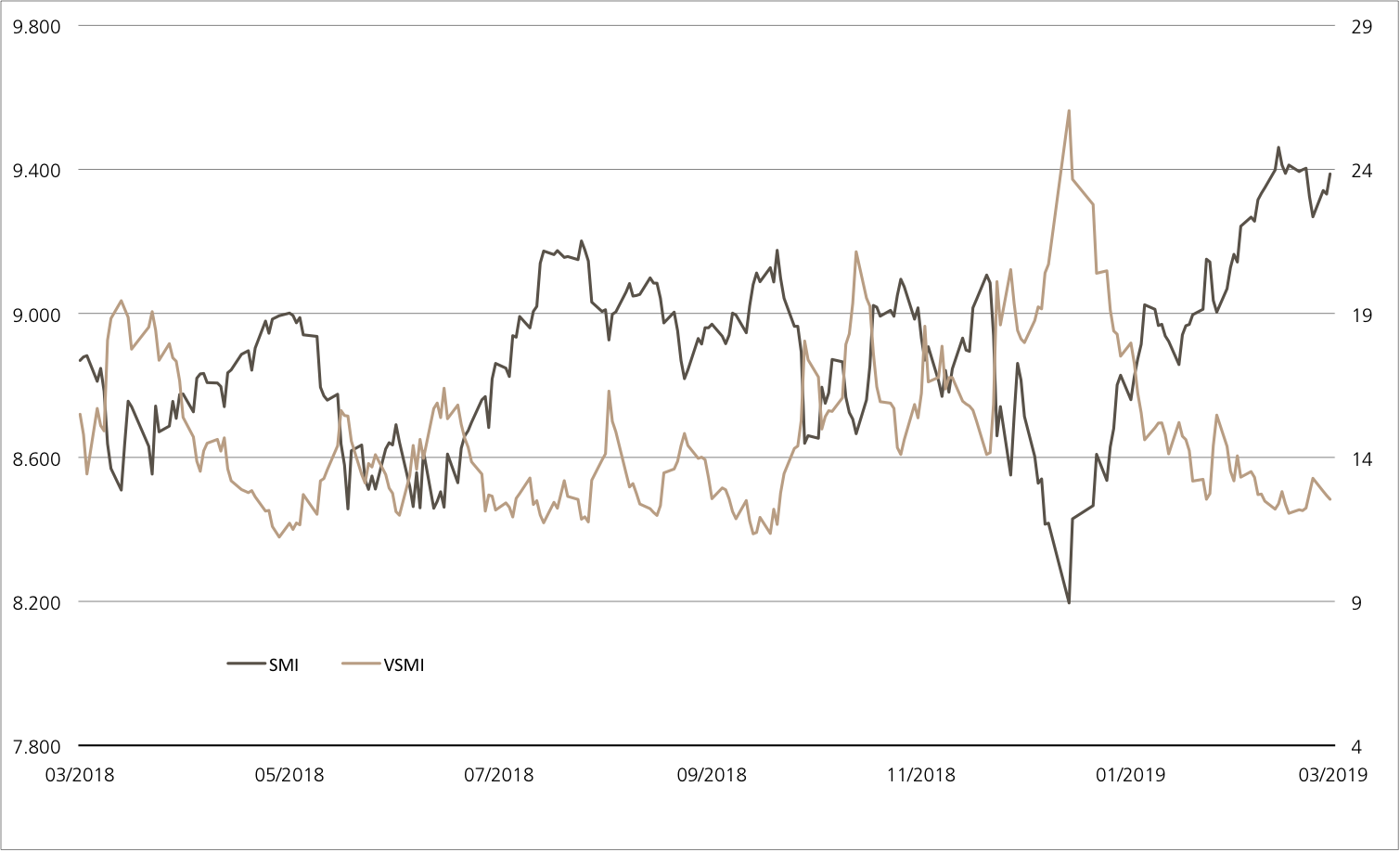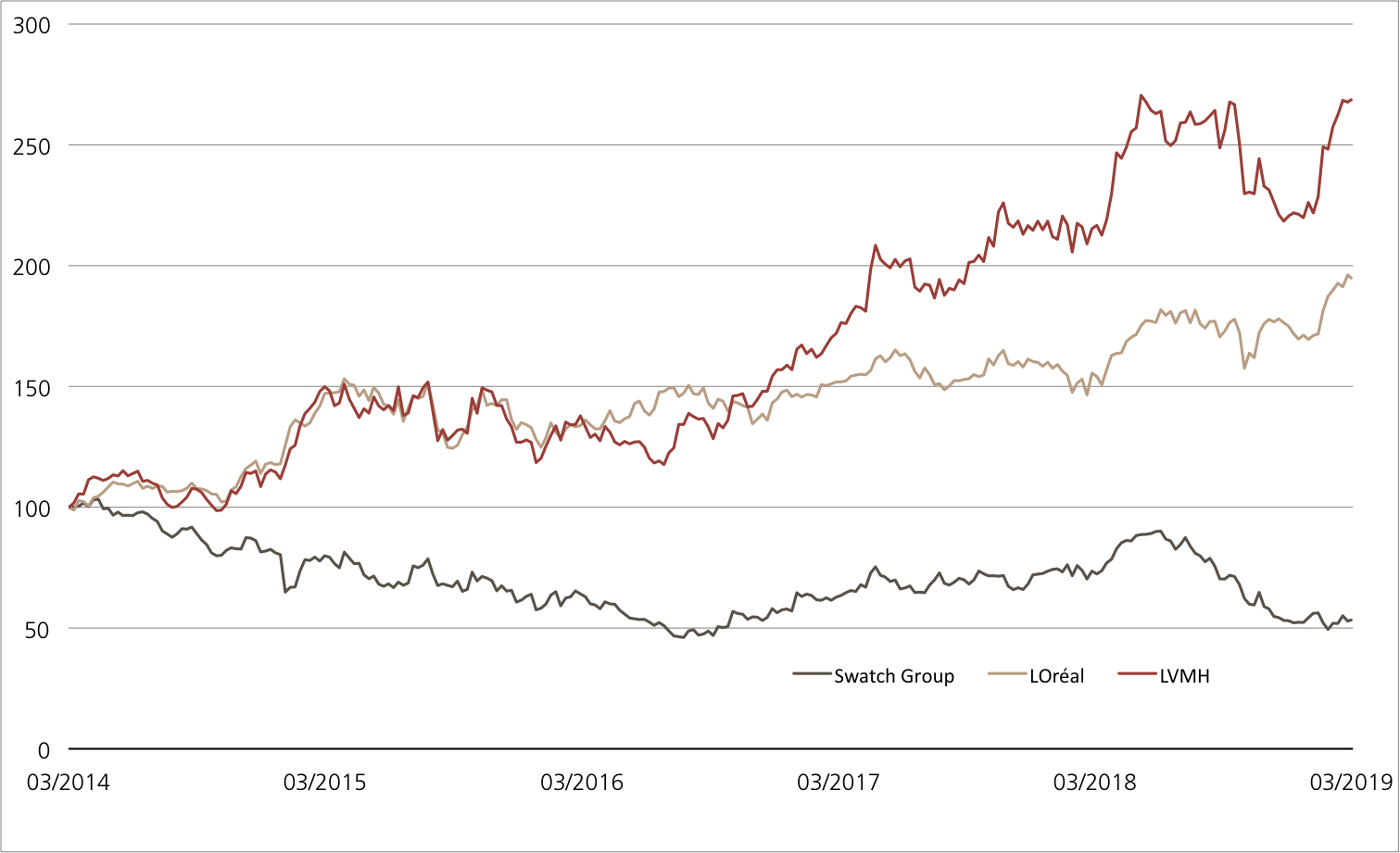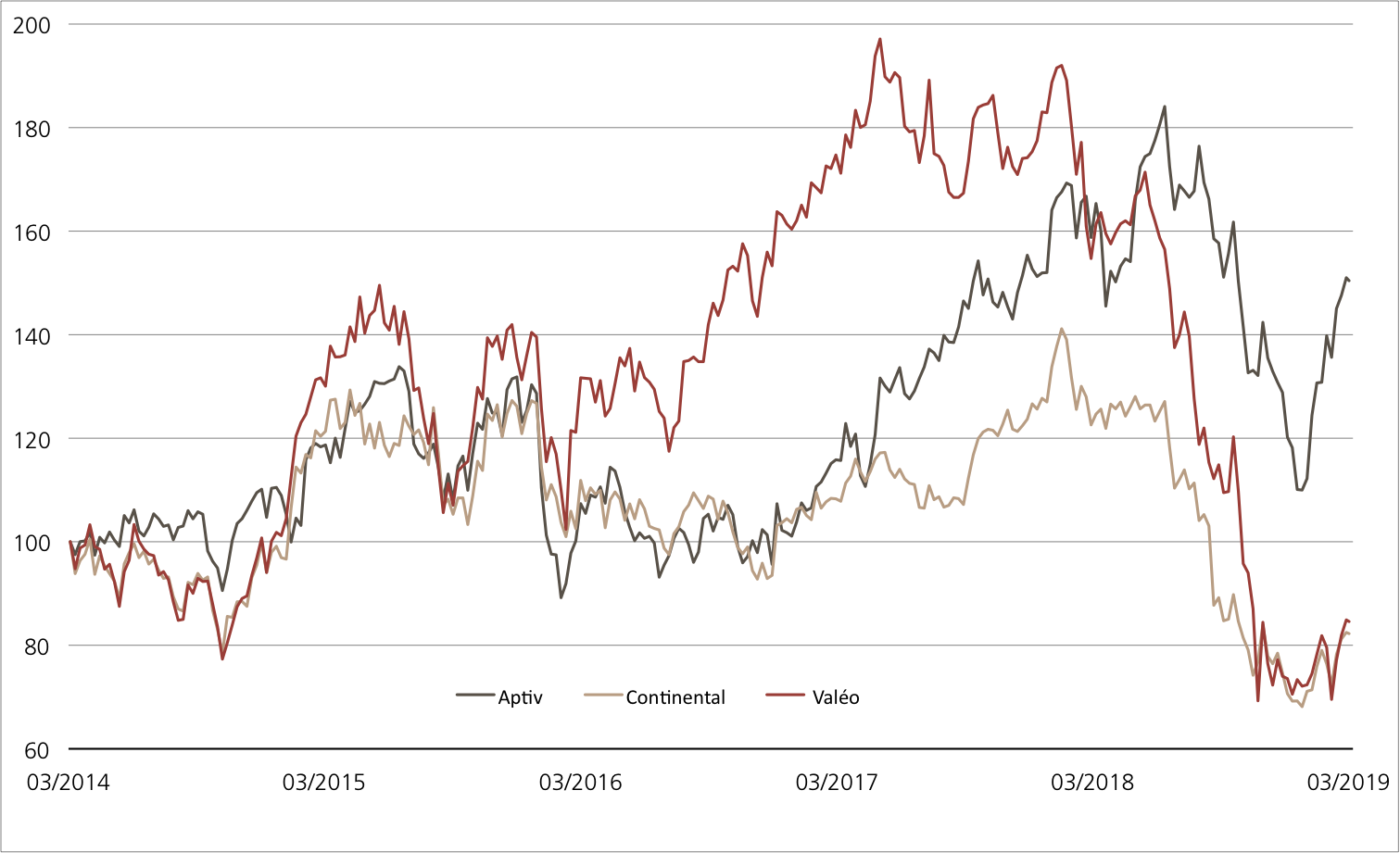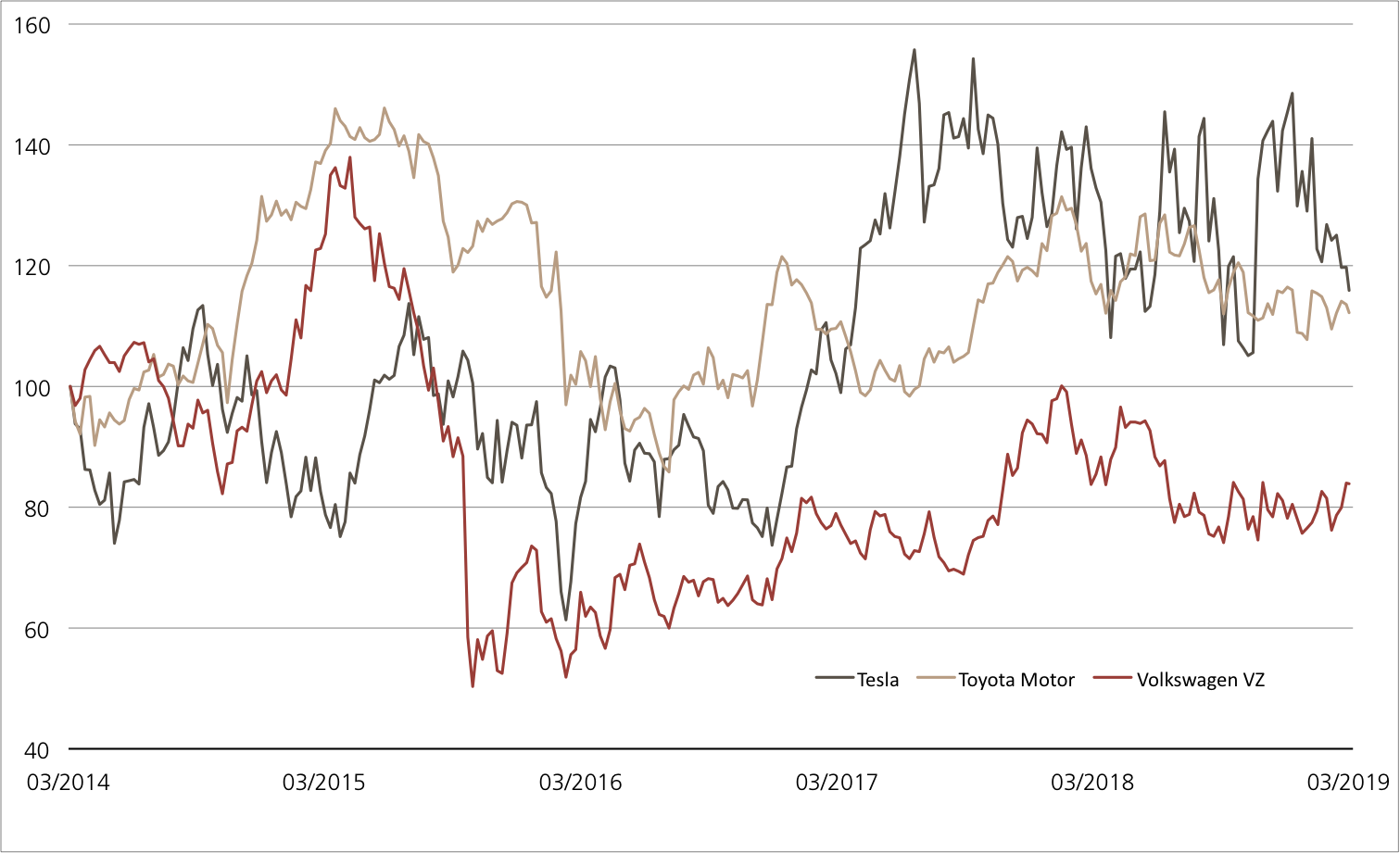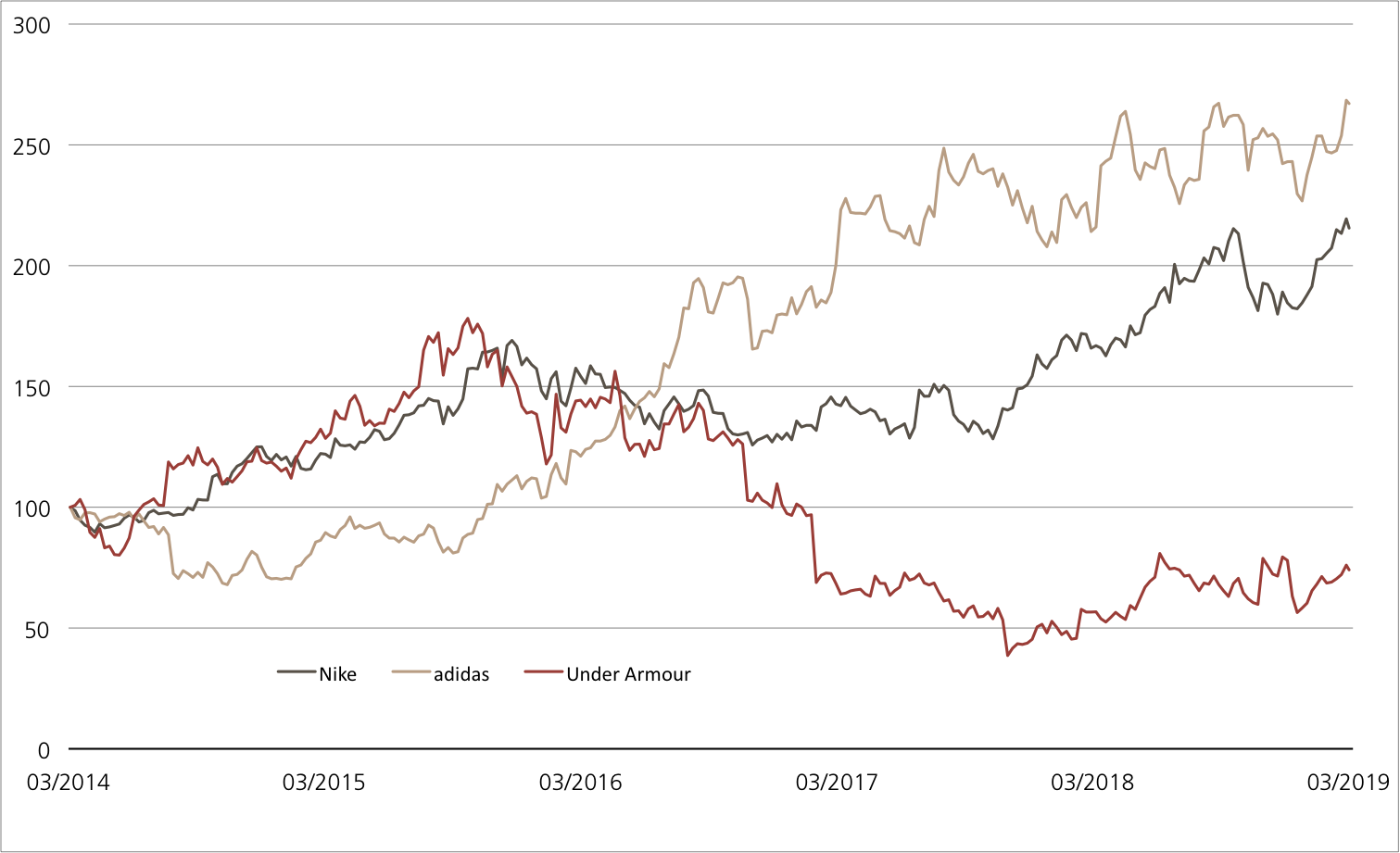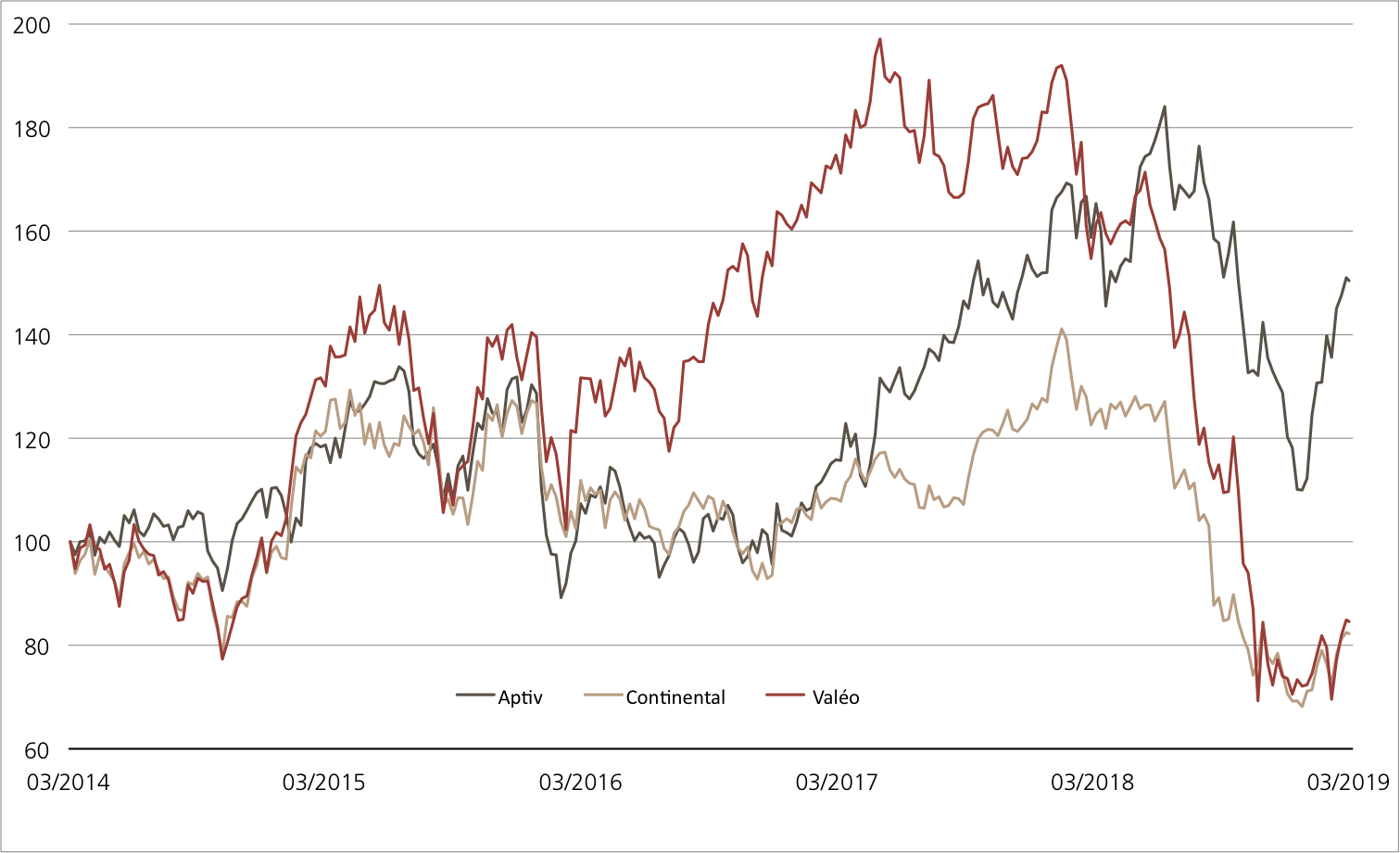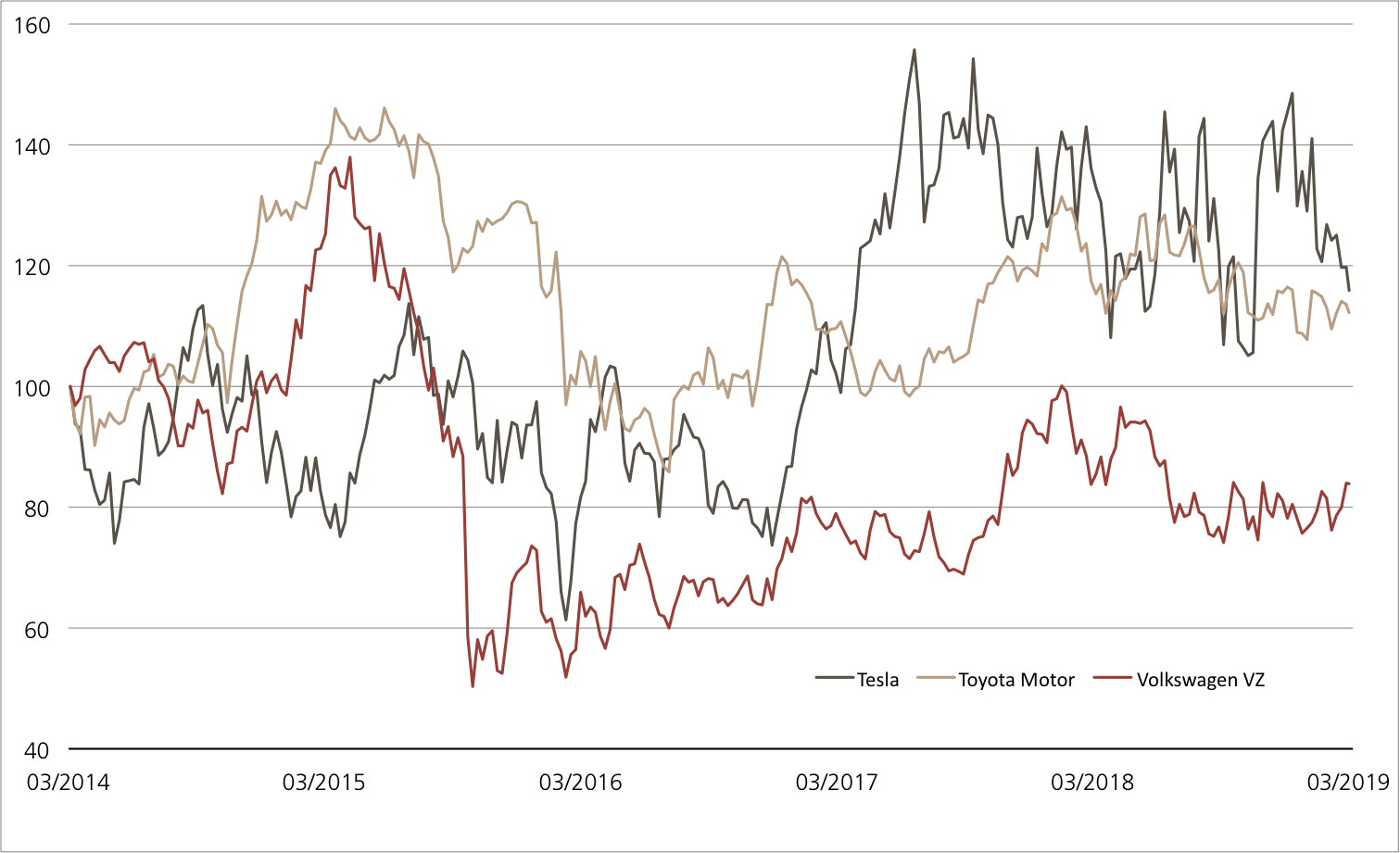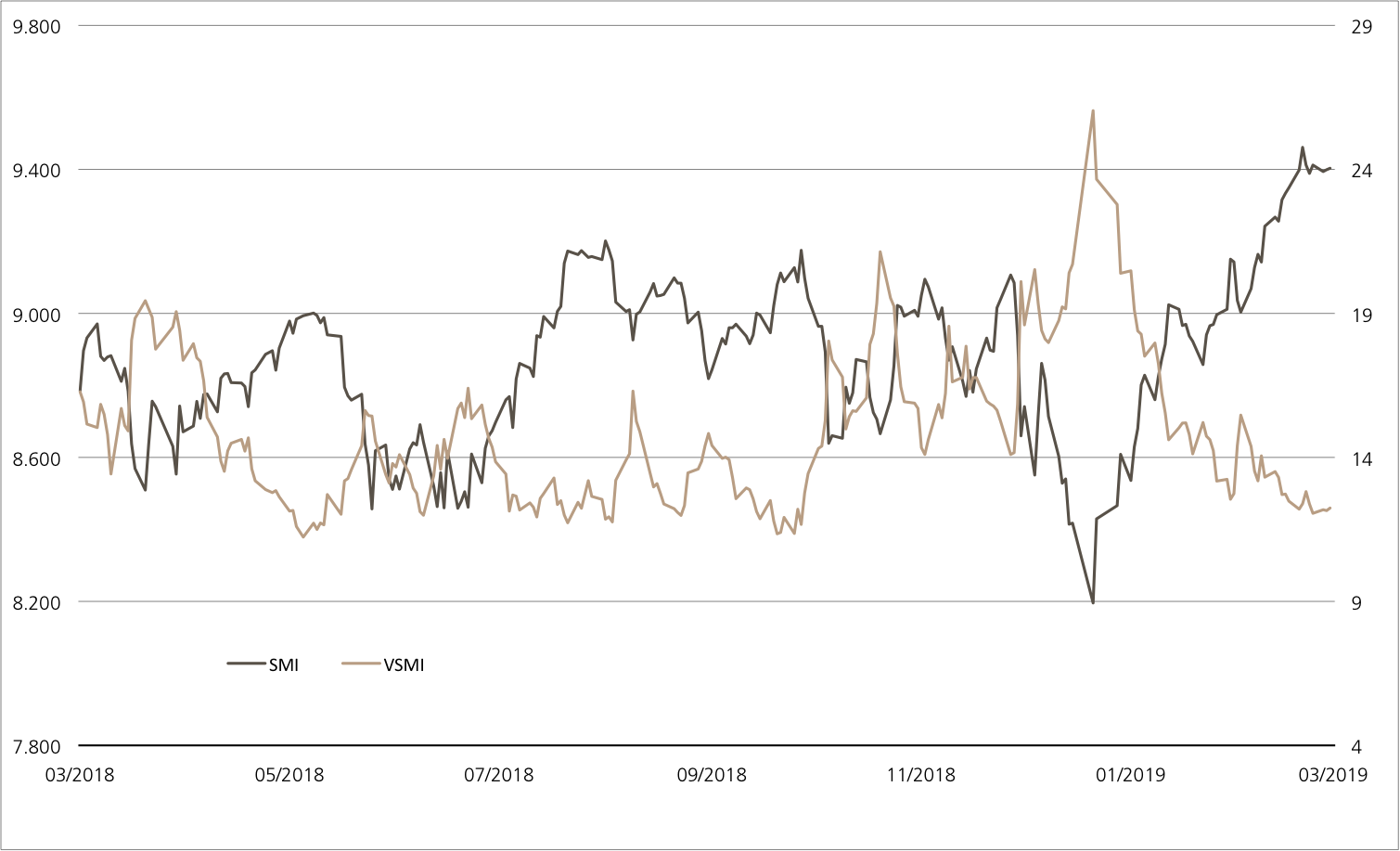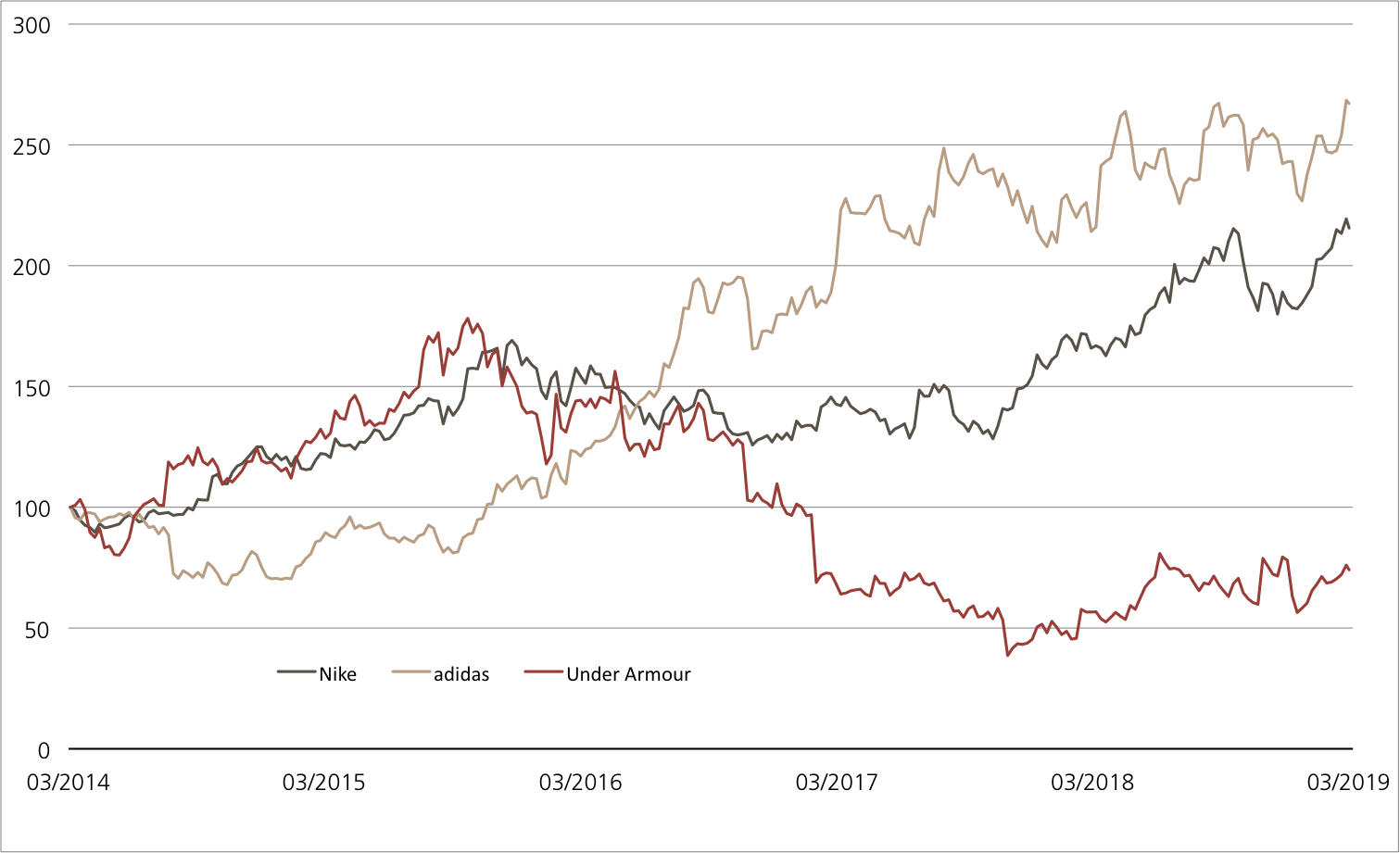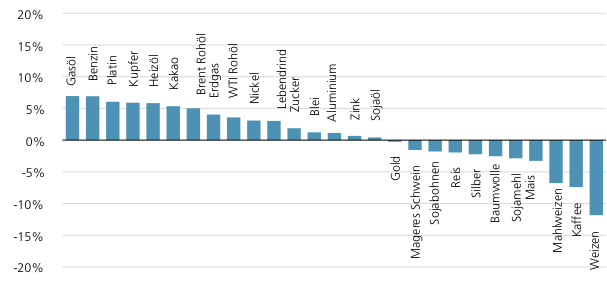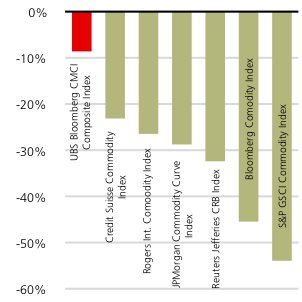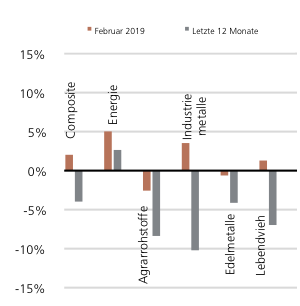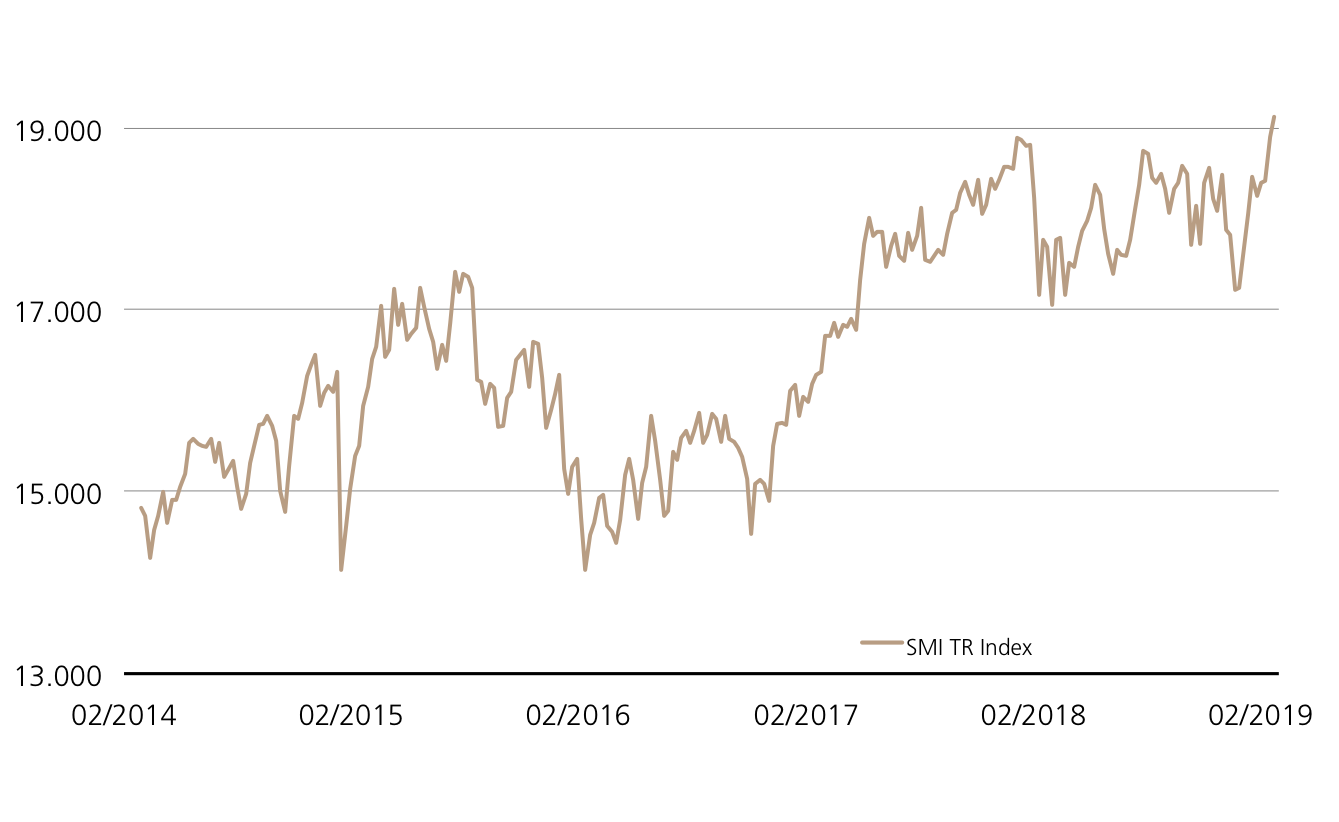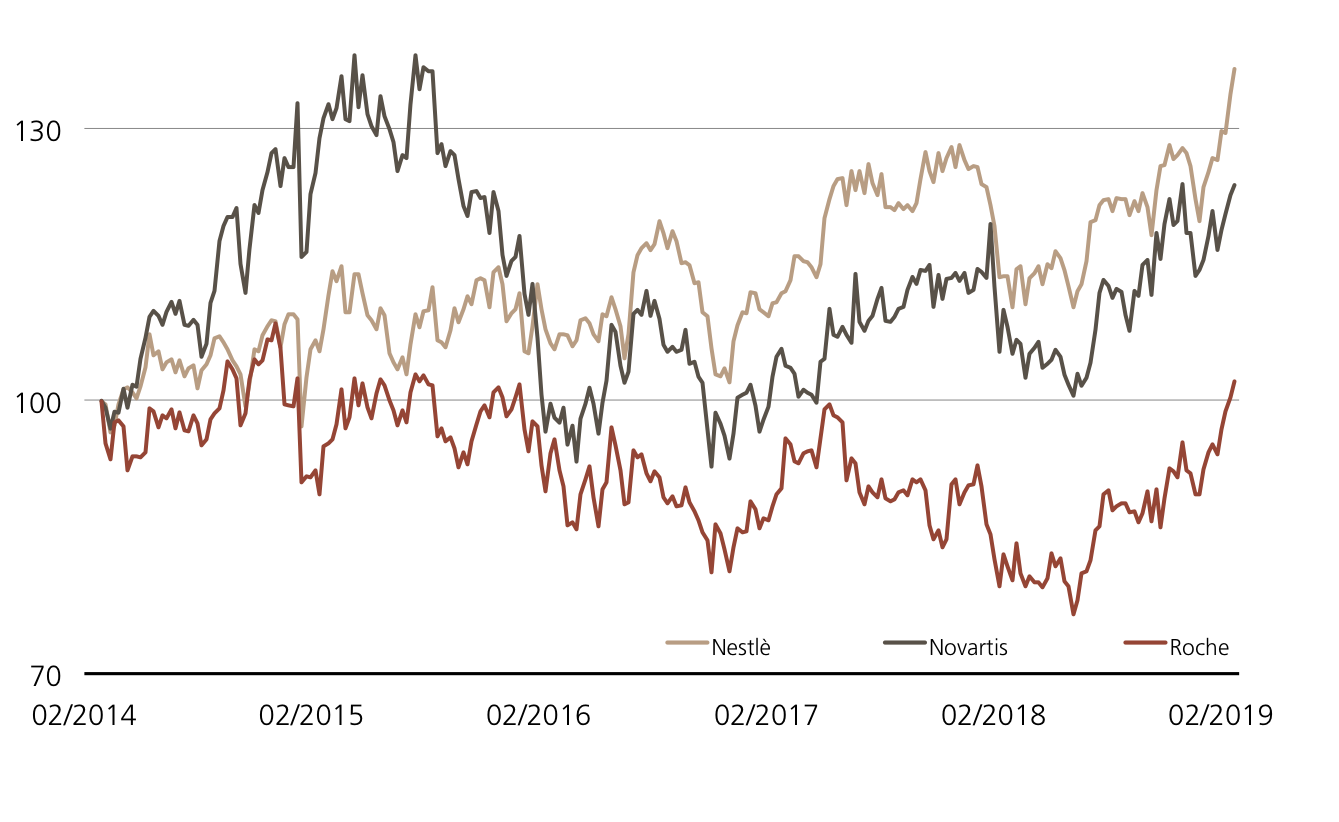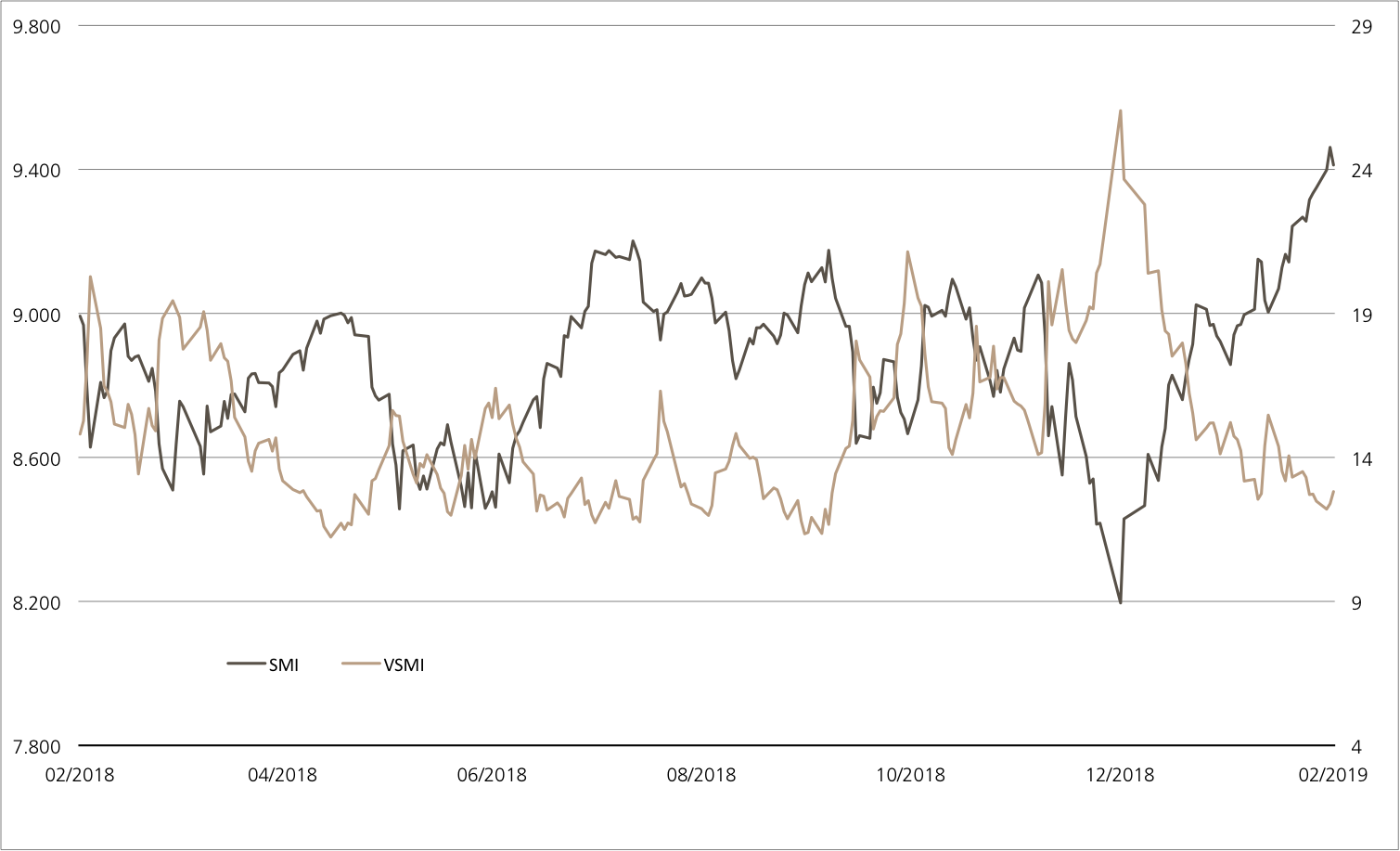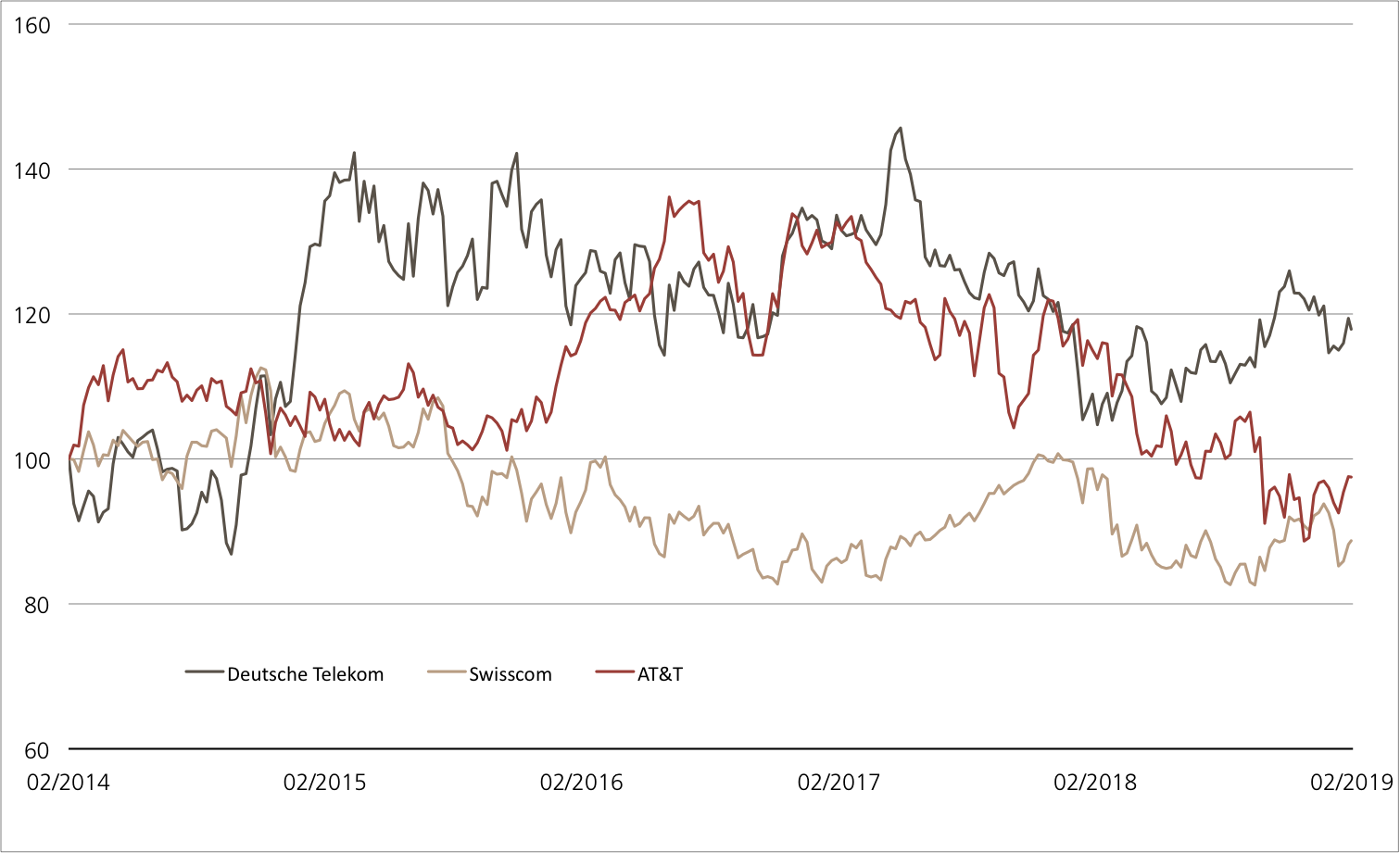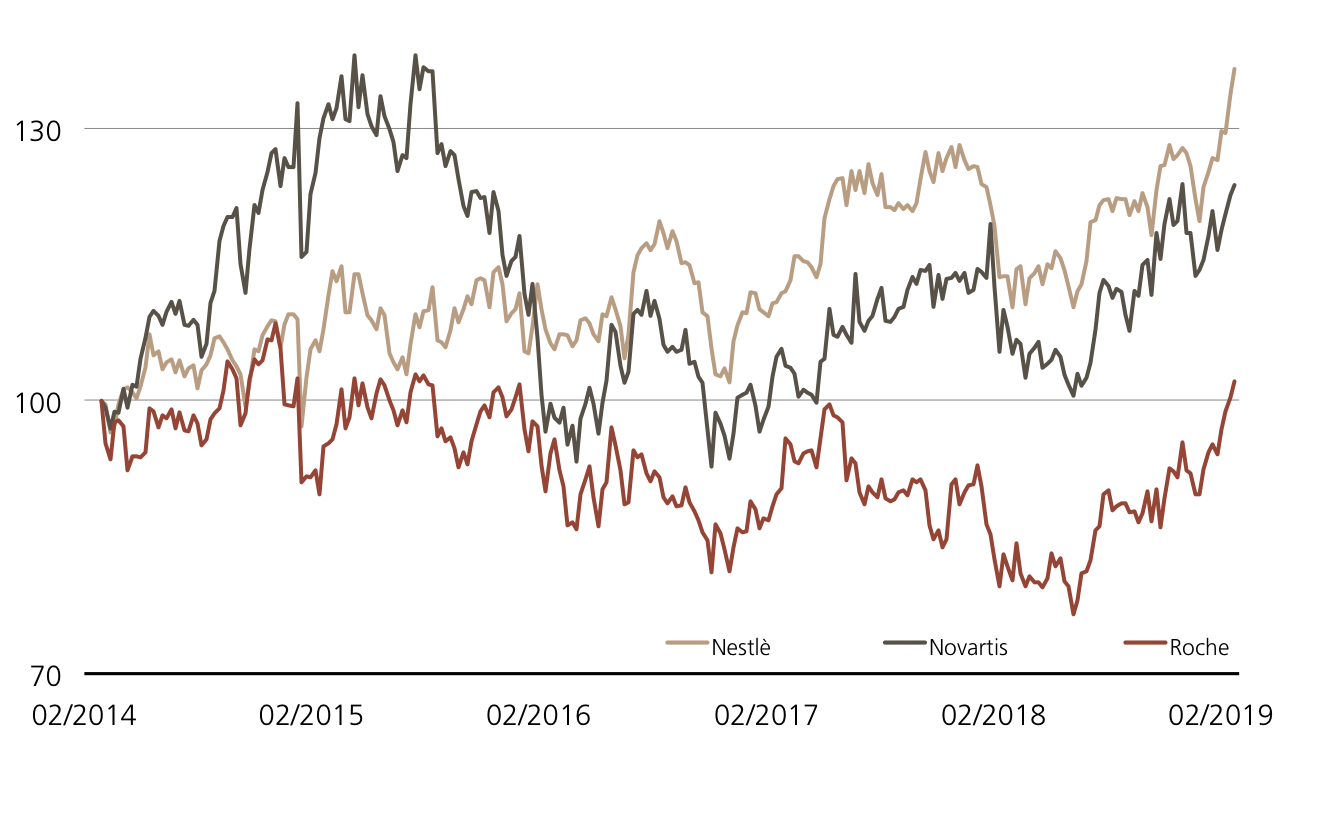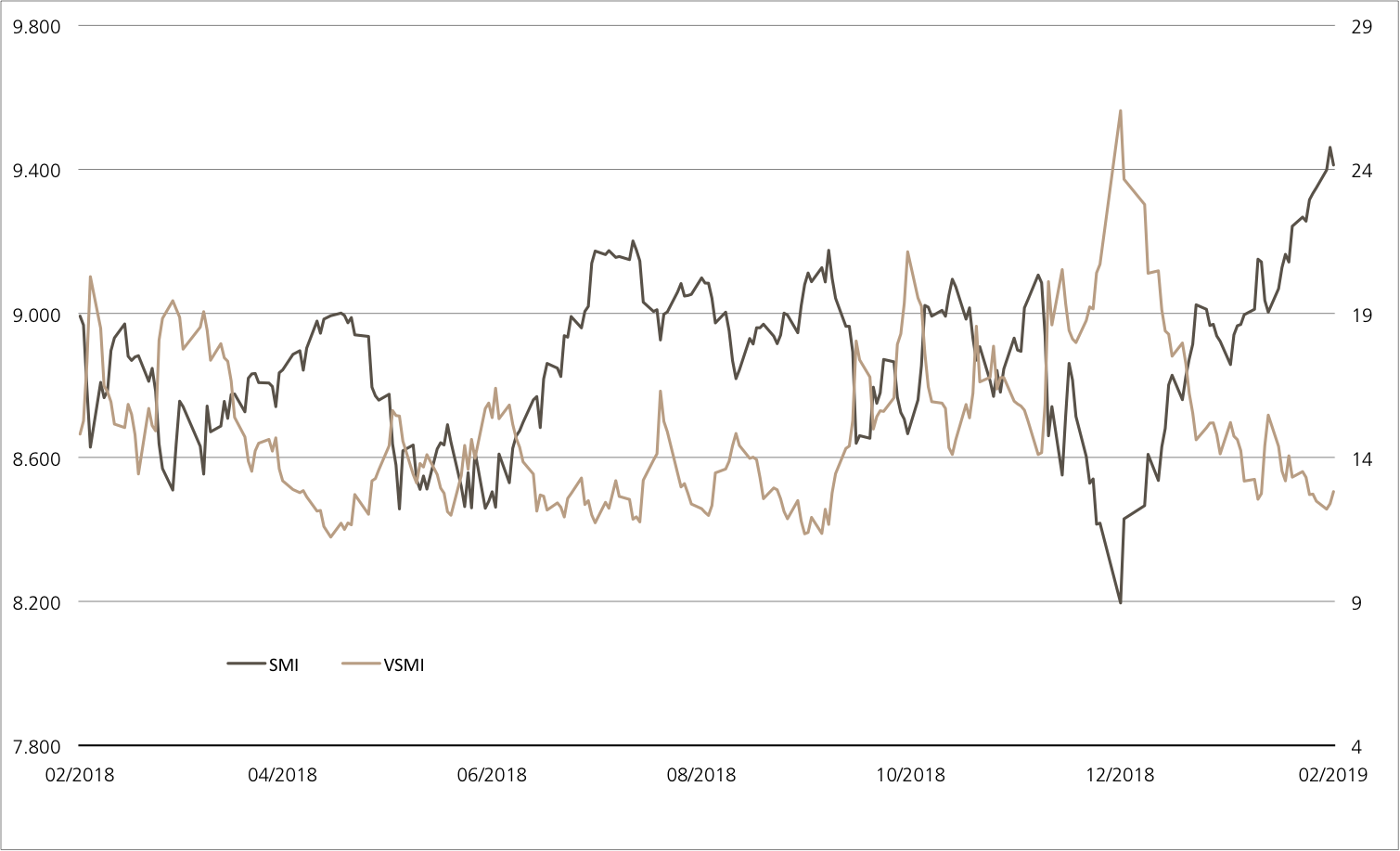Weekly Hits: Technologie financière & Swiss Derivative Awards
Vendredi, 29.03.2019

- Thème 1: Technologie financière - Une branche qui a le vent en poupe
- Thème 2: Swiss Derivative Awards - Deux prix pour UBS
Technologie financière
Une branche qui a le vent en poupe
Alors qu’il manque encore quelques points au SMI™ pour renouer avec son plus haut historique de l’an passé, le Solactive FinTech 20 Total Return Index affiche de son côté une belle envolée. La variante en francs du baromètre enregistre déjà un gain supérieur à 20% depuis le début de l’année.¹ Une étude très récente confirme le vif intérêt que suscite cette nouvelle branche. Selon l’analyse « The Pulse of Fintech 2018 » réalisée par KPMG, les investissements mondiaux dans les start-ups de la technologie financière ont plus que doublé entre 2017 et 2018 en passant de 50,8 à 111,8 milliards de dollars américains. Les méga-transactions telles que l’investissement de Blackstone dans Refinitiv, le prestataire de données de marchés financiers, pour 17 milliards de dollars américains tirent le volume vers le haut. Avec les UBS PERLES sur le Solactive FinTech TR Index, les investisseurs peuvent s’engager de manière diversifiée dans le secteur. Le produit est disponible dans trois monnaies : franc suisse (symbole : FINTE), euro (symbole : FINTEE) et dollar américain (symbole : FINTEU).
Les activités de fusions & acquisitions ainsi que les cycles de financement mondiaux présentent des disparités régionales. Ainsi, tandis que les investissements dans la technologie financière ont presque triplé de 12,2 à 34,2 milliards de dollars américains en Europe, ils ont « seulement » doublé outre-Atlantique. Néanmoins, avec un volume de transactions de 52,5 milliards de dollars américains, les États-Unis mènent la danse dans ce domaine. En Europe, les principales transactions ont impliqué Worldplay qui a été rachetée au premier trimestre par Vantiv le spécialiste américain des cartes de crédit pour près de 13 milliards de dollars américains, mais surtout Nets, le prestataire de paiements. L’évolution du volume moyen des transactions de fusions & acquisitions montre bien que le montant des opérations flambe. En Europe, il est passé de 23,7 millions de dollars américains en 2017 à 62,5 millions de dollars américains en 2018. (Source : KPMG, « The Pulse of Fintech 2018 », 13.02.2019)
Le Solactive FinTech TR Index comporte un grand nombre d’entreprises très variées du secteur. Qu’il s’agisse de traitements des paiements, de systèmes de logiciels bancaires complets ou d’analyses de données financières, le baromètre se base sur 20 « Pure Players » différents du domaine de la technologie financière. Il inclut par exemple Adyen, une société néerlandaise ambitieuse dont les opérations sont en pleine expansion. Spécialisée dans les traitements de paiements numériques, Adyen est cotée en bourse depuis l’année dernière seulement mais la valeur de son titre a déjà presque triplé par rapport au cours d’émission.¹ En 2018, son bénéfice opérationnel a progressé de 83% et sa marge est passée de 49% à 52%. Mais cela ne suffit toujours pas à Adyen puisque la direction vise une marge bénéficiaire supérieure à 55% à long terme. (Source : Adyen, rapport financier, 27.02.2019) L’indice de stratégie inclut aussi la société suisse Temenos. Ce fabricant de logiciels bancaires affiche également une forte croissance et ce, depuis plusieurs années déjà. Entre 2014 et 2018, son chiffre d’affaires et son EBITDA (résultat d’exploitation avant intérêts, impôts et amortissements) n’ont cessé de grimper. Pendant cette période, ses recettes ont augmenté de 79,4% et son EBITDA de 85,6%. Cette tendance positive devrait se poursuivre: pour 2019, Temenos prévoit d’accroître ses recettes de 16% à 19% et son bénéfice opérationnel de 18% environ. (Source : Temenos, rapport financier 2018, 25.03.2019)Opportunités: le Solactive FinTech TR Index offre une possibilité d’investissement intéressante dans le secteur de la technologie financière en plein essor. Il est revu et adapté si nécessaire deux fois par an, en mars et en septembre, afin que le sous-jacent reste d’actualité. Les UBS Open End PERLES (symboles : FINTE, FINTEE, FINTEU) participent pleinement à l’évolution de l’indice de stratégie. Seule une commission de gestion de 0,75% p.a. est déduite. Étant donné qu’il s’agit d’un indice Total Return, les versements de dividendes des membres ne sont pas perdus car ils sont réinvestis nets dans l’indice.
Risques: les Open End PERLES ne bénéficient d’aucune protection du capital. En conséquence, une évolution négative des sous-jacents génère les pertes correspondantes pour le produit structuré. Par ailleurs, avec les produits structurés, l’investisseur supporte le risque d’émetteur. Cela signifie qu’en cas d’insolvabilité d’UBS SA, le capital investi peut être perdu, indépendamment de l’évolution du sous-jacent.
Vous trouverez davantage de produits UBS et des informations sur les opportunités et les risques à l’adresse ubs.com/keyinvest.
Solactive FinTech TR Index depuis le 03.04.2015¹
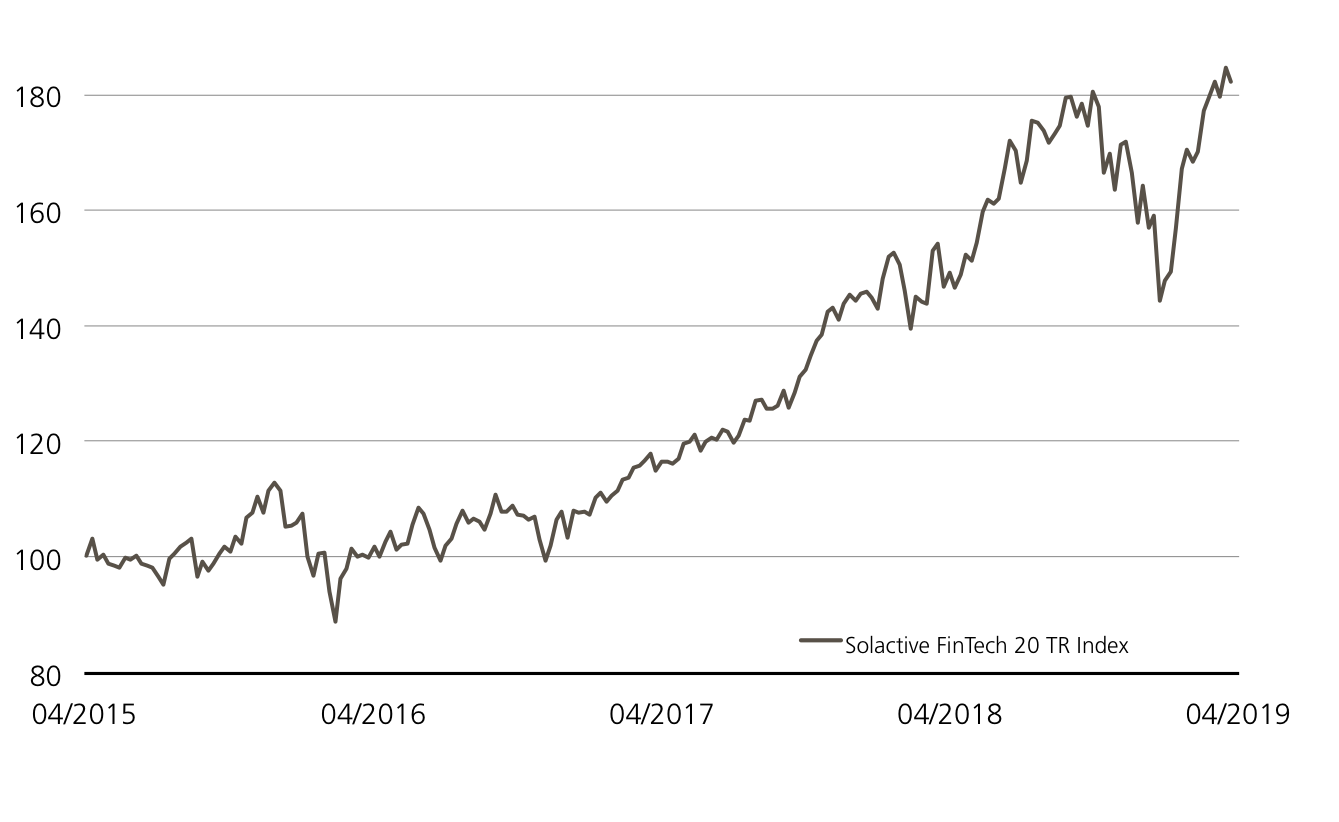
Le Solactive FinTech TR Index a également dû payer son tribut à la correction de marché du quatrième trimestre 2018. Mais il s’est vivement repris : la variante en franc suisse a même atteint un nouveau plus haut.
Source: UBS AG, Bloomberg
Valeurs du: 27.03.2019
Temenos vs. SMIM™
(5 ans, aux fins d’illustration uniquement, données en%)¹
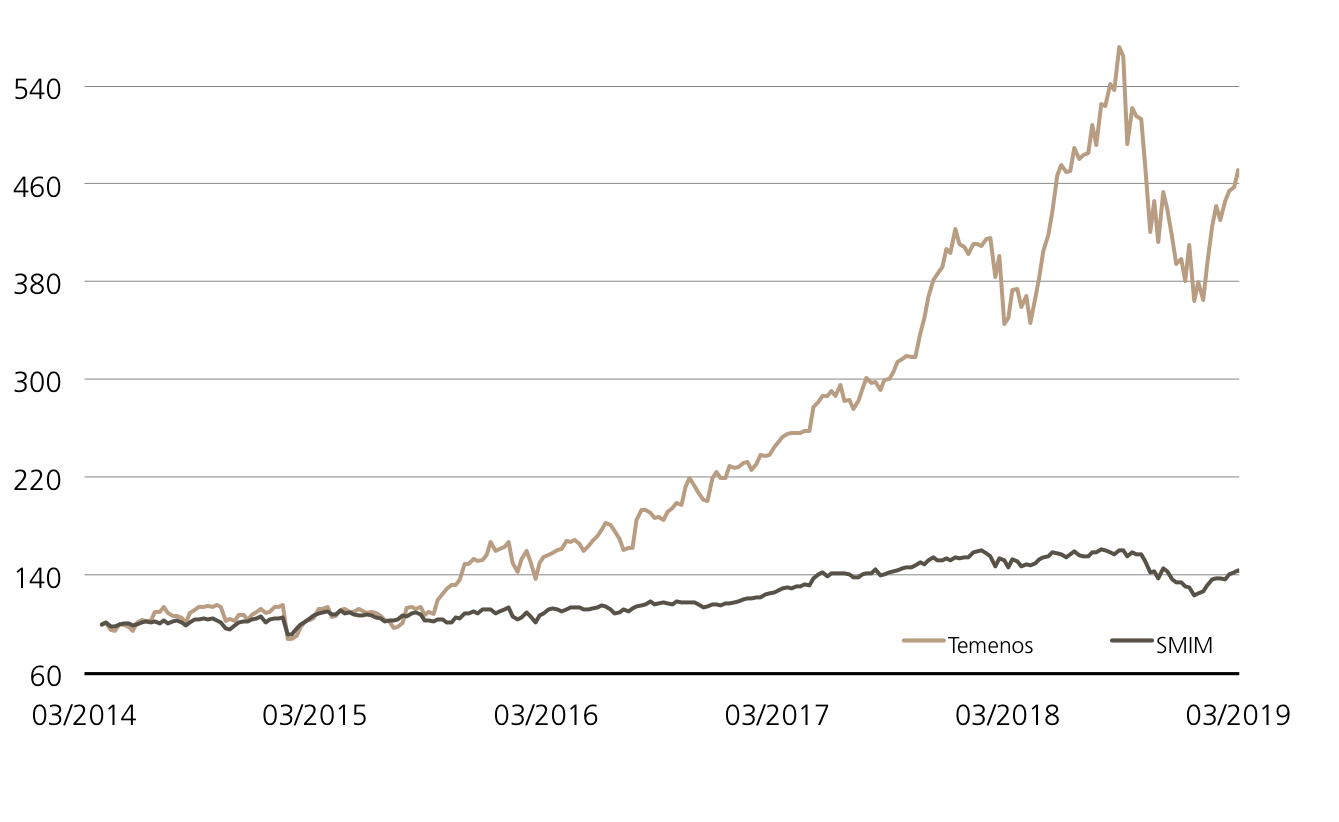
L’action Temenos n’a laissé aucune chance au SMIM™ ces cinq dernières années. Le cours de la Mid Cap suisse a plus que quadruplé pendant la période.
Source: UBS AG, Bloomberg
Valeurs du: 27.03.2019
¹) La performance passée n’indique pas les résultats futures.
²) Les condition des ETTs sont vérifiés annuellement et peuvent être ajustées avec un délai de 13 mois après la publication.
Open End PERLES sur Solactive FinTech 20 Total Return Index (CHF)
| Symbol | FINTE |
| SVSP Name | Tracker Certifikat |
| SVSP Code | 1300 |
| Sous-jacent | Solactive FinTech 20 Total Return Index |
| Conversion ratio | 1.0108:1 |
| Devise | CHF |
| Frais de gestion | 0.75% p.a. |
| Participation | 100% |
| Echéance | Open End |
| Émetteur | UBS AG, London |
| Bid/Ask | CHF 186.80 / 188.80 |
Open End PERLES sur Solactive FinTech 20 Total Return Index (USD)
| Symbol | FINTEU |
| SVSP Name | Tracker Certifikat |
| SPVSP Code | 1300 |
| Sous-jacent | Solactive FinTech 20 Total Return Index |
| Conversion ratio | 1:1.013685 |
| Devise | USD |
| Frais de gestion | 0.75% p.a. |
| Participation | 100% |
| Echéance | Open End |
| Émetteur | UBS AG, London |
| Bid/Ask | USD 175.50 / 177.30 |
Vous trouverez davantage de produits UBS et des informations sur les opportunités et les risques à l’adresse ubs.com/keyinvest.
Source: UBS AG, Bloomberg
Valeurs du: 27.03.2019
Apérçu du marché
| Index | Citation | Semaine¹ |
| SMI™ | 9’390.59 | -0.8% |
| SLI™ | 1’433.27 | -1.7% |
| S&P 500™ | 2’805.37 | -0.7% |
| Euro STOXX 50™ | 3’322.04 | -1.5% |
| S&P™ BRIC 40 | 4’239.28 | -3.1% |
| CMCI™ Compos. | 928.97 | -1.4% |
¹ Changement basé sur le cours de clôture du jour précédent par rapport au cours de clôture de la semaine dernière.
SMI™ vs. VSMI™ 1 année
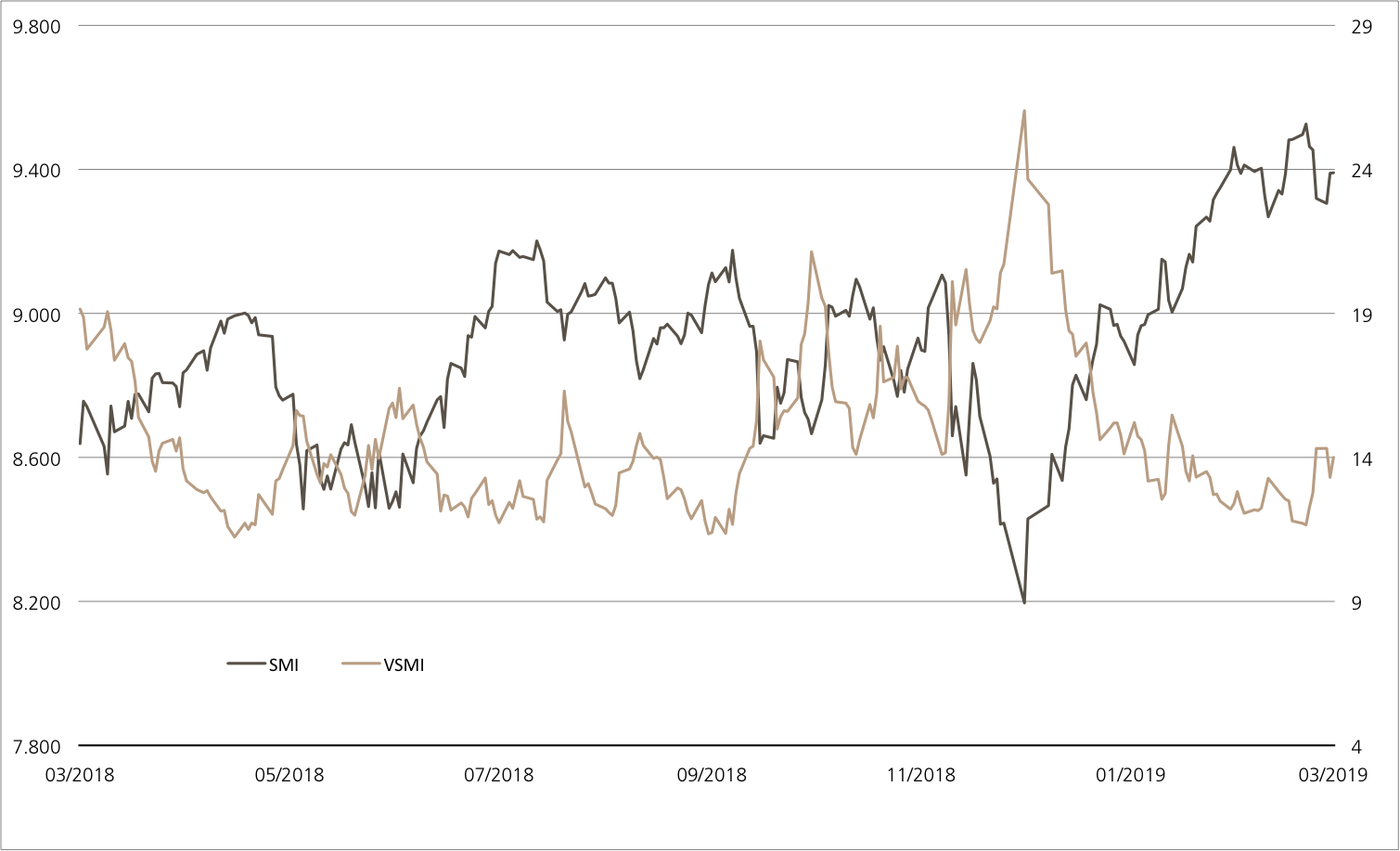
L’index VSMI™ est calculé depuis 2005. Il affiche la volatilité des actions inclus dans le SMI™ index. Pour la calculation, un portefeuille est utilisé qui ne réagit qu’au variations de la volatilité au lieu des variations des prix. En le faisant, la méthodologie du VSMI™ utilise la volatilité carré, connu sous le terme variance, des options sur le SMI avec 30 jours jusqu’à l’échéance négociées à la Bourse Eurex.
Source: UBS AG, Bloomberg
Valeurs du: 27.03.2019
Swiss Derivative Awards
Deux prix pour UBS
La 14e édition des Swiss Derivative Awards s’est déroulée le 21 mars 2019 à Zurich. Au cours de la soirée, le jury a distingué cinq produits structurés et décerné la mention « Top Service » à quatre émetteurs. UBS a remporté l’un des trophées convoités dans chacune des deux catégories. Les membres du jury ont désigné le 100% Capital Protected Note (CPN) sur WTI Crude Oil (symbole : KBTVDU) « Meilleur produit de matières premières ». Ce produit jouit d’une protection totale du capital à l’échéance. En parallèle, le CPN participe, sur la base du Strike et également à l’échéance, à la hausse du cours du pétrole avec un taux de participation de 150%.
Selon Derivative Partners AG, l’organisateur de cette soirée des « Oscars du secteur des produits dérivés », 250 invités issus de l’industrie européenne des produits dérivés ont assisté aux Swiss Derivative Awards 2019 à l’AURA de Zurich. Tous étaient impatients de voir quelles solutions de placement le jury composé de quatre experts désignerait cette année « meilleurs produits structurés de Suisse ». Quatre émetteurs ont par ailleurs reçu la mention « Top Service » particulièrement convoitée puisqu’elle se fonde sur huit critères différents dont le Market Making, le Pricing, le site internet mais aussi un vote des investisseurs. UBS fait partie des quatre lauréats qui ont rempli l’ensemble des critères pour ce prix.
Jérôme Allet, Head UBS Public Distribution Switzerland, avait déjà reçu l’un des trophées prisés plus tôt dans la soirée pour le 100 % CPN sur WTI Crude Oil (symbole : KBTVDU) qui s’est imposé dans la catégorie « Meilleur produit de matières premières » malgré une concurrence féroce. Le jury a ainsi récompensé l’idée sous-tendant cette solution de placement lancée en 2018 selon laquelle une participation disproportionnée à la hausse du prix du pétrole est possible avec une protection totale du capital. En raison des craintes de surproduction circulant sur les marchés, le sous-jacent s’est considérablement replié au quatrième trimestre 2018, mais il a repris de la vigueur après la décision de l’OPEP et d’autres pays producteurs (OPEP+) en décembre dernier de réduire la production.¹
Opportunités: certes, le contrat à terme sur WTI arrivant prochainement à échéance n’atteint pas encore le Strike du CPN (66,22 dollars américains) mais le produit n’arrive à échéance qu’en juin 2022. Il reste donc assez de temps pour que la composante de participation entre en jeu: dès que le contrat à terme dépasse le niveau du Strike à l’échéance, le CPN participe aux gains de manière disproportionnée avec un taux de 150%. Si le WTI ne dépasse pas ou n’atteint pas la barre déterminante, la protection du capital s’applique. À l’échéance, le nominal est garanti à 100%.
Risques: la protection du capital n’entre en jeu qu’à la date d’échéance pour le CPN. Le produit peut subir des fluctuations de prix pendant la période. Par ailleurs, avec les produits structurés, l’investisseur supporte le risque d’émetteur. Cela signifie qu’en cas d’insolvabilité d’UBS SA, le capital investi peut être perdu, indépendamment de l’évolution du sous-jacent.
Vous trouverez davantage de produits UBS et des informations sur les opportunités et les risques à l’adresse ubs.com/keyinvest.
WTI Crude Oil Future (USD / Barrel) 5 ans
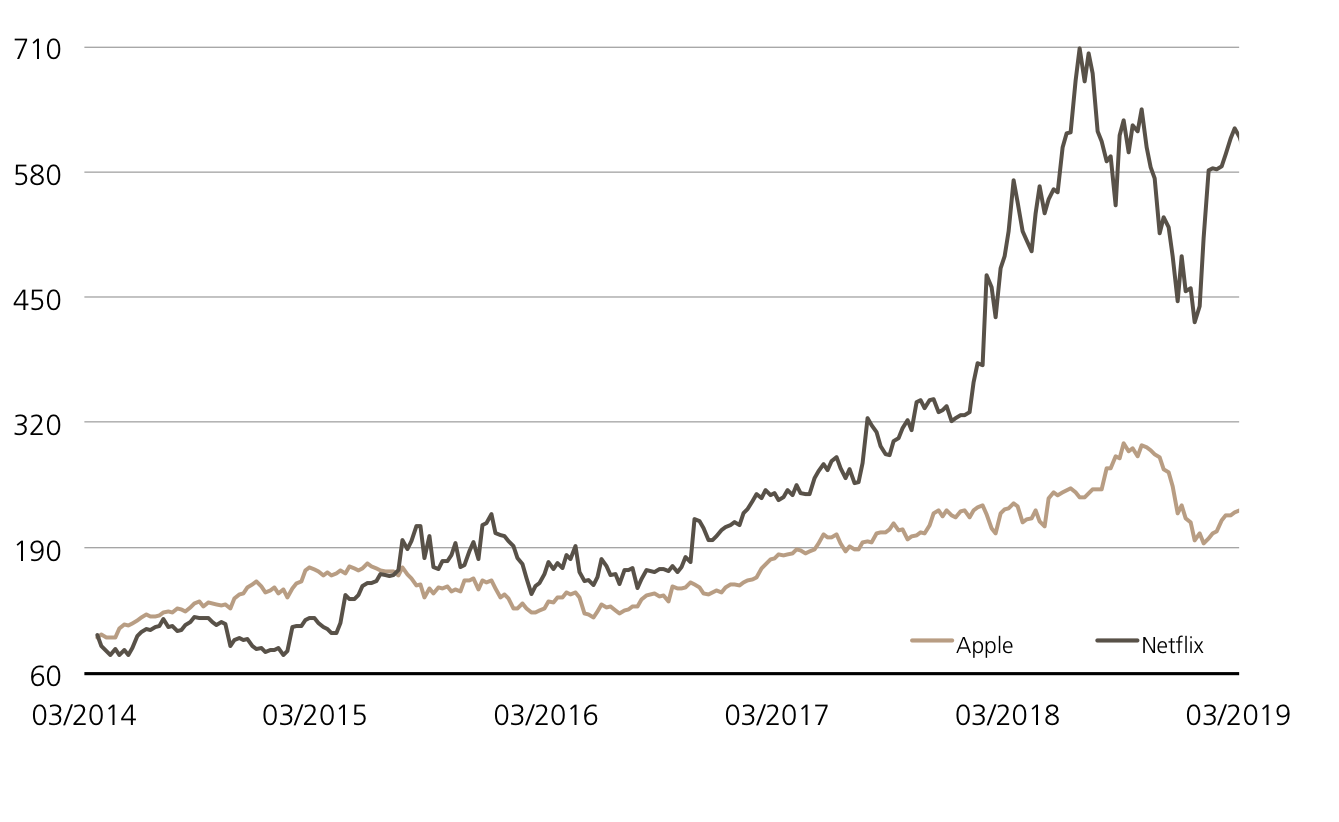
Source: UBS AG, Bloomberg
Valeurs du: 27.03.2019
100% Capital Protected Note sur WTI Crude Oil Future
| Symbol | KBTVDU |
| SVSP Name | Capital Protection Certificate with Participation |
| SPVSP Code | 1100 |
| Sous-jacent | WTI Crude Oil Future |
| Nominal | USD 1’000 |
| Protection du capital | 100% |
| Participation | 150% |
| Echéance | 20.06.2022 |
| Émetteur | UBS AG, London |
| Bid/Ask | 99.35% / 100.40% |
Vous trouverez davantage de produits UBS et des informations sur les opportunités et les risques à l’adresse ubs.com/keyinvest.
Source: UBS AG, Bloomberg
Valeurs du: 27.03.2019
¹) La performance passée n’indique pas les résultats futures.
²) Les condition des ETTs sont vérifiés annuellement et peuvent être ajustées avec un délai de 13 mois après la publication.

